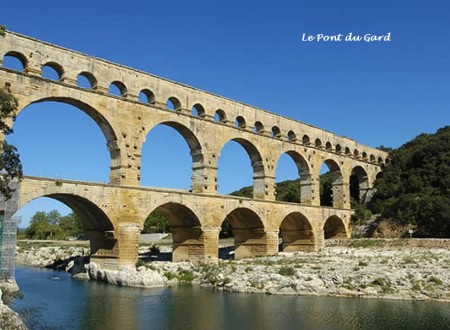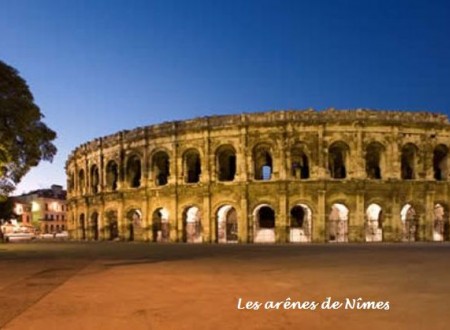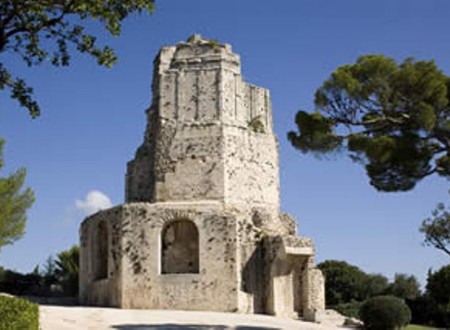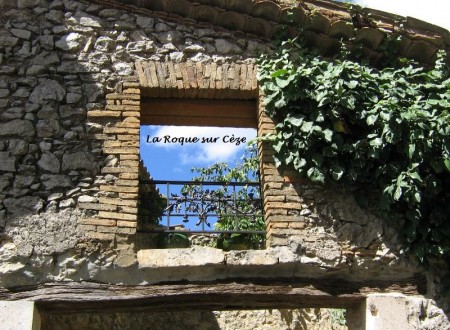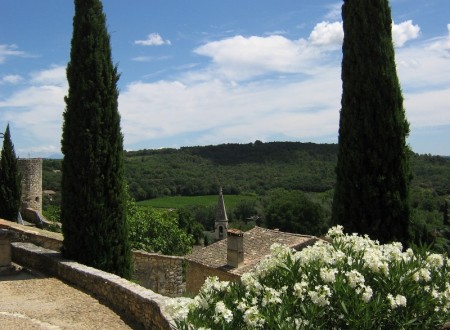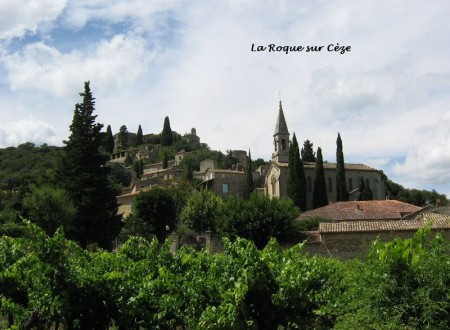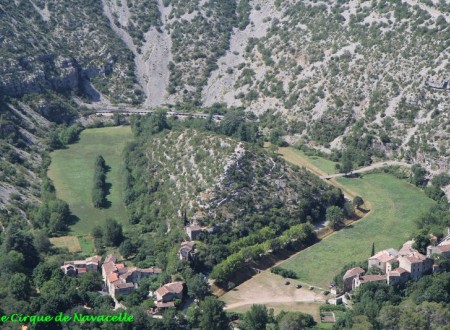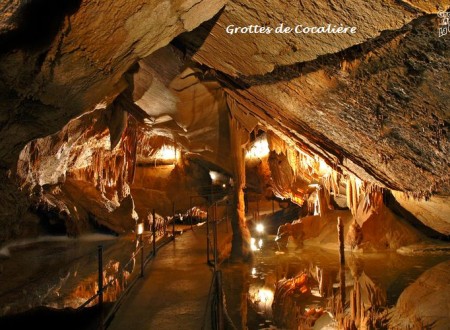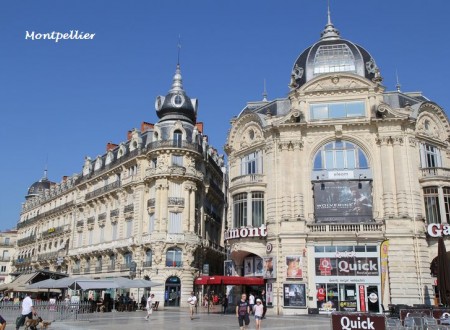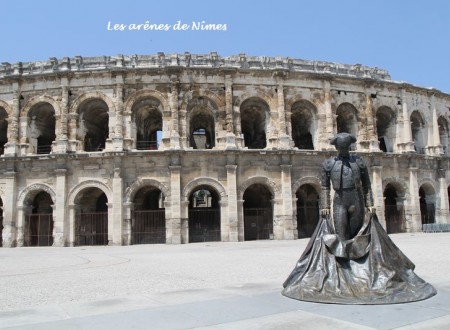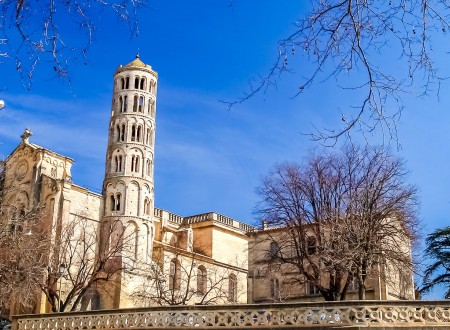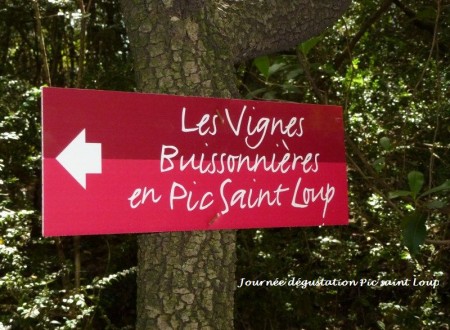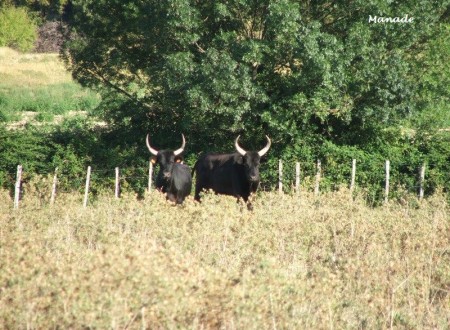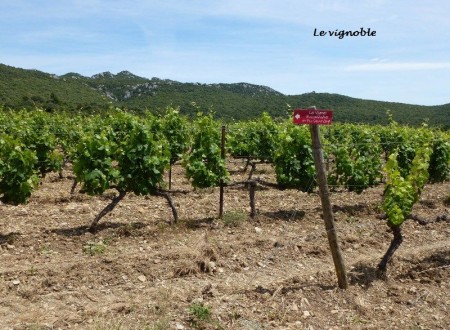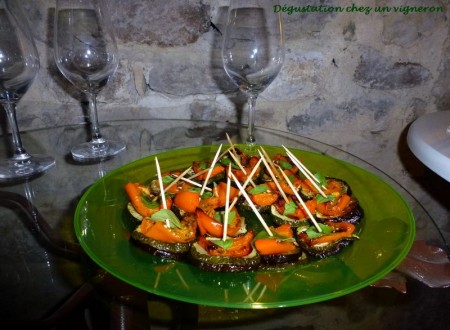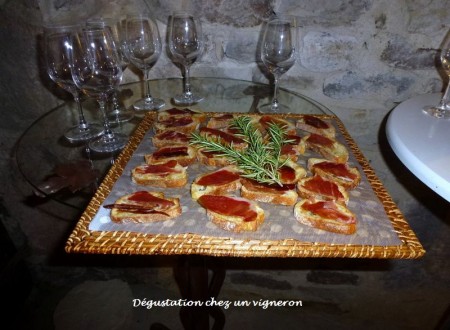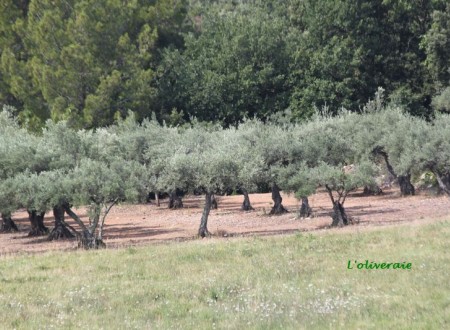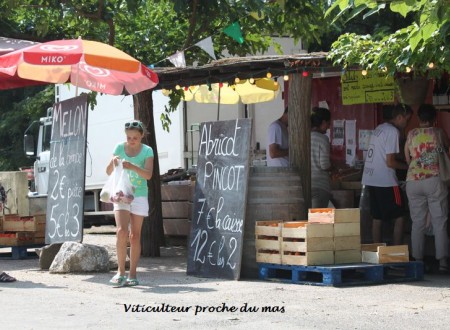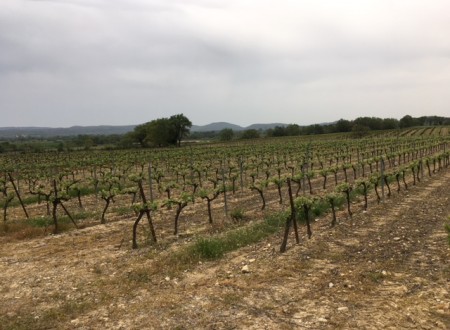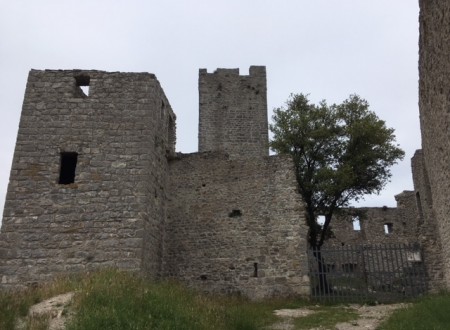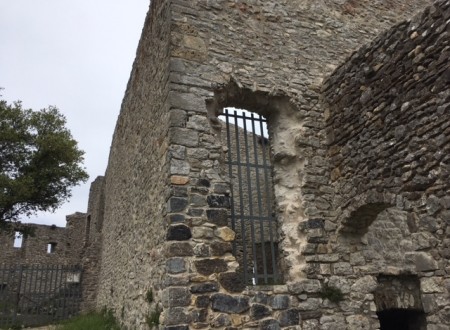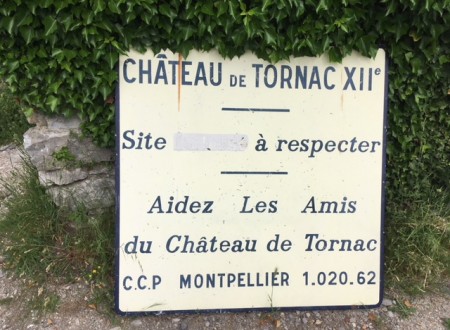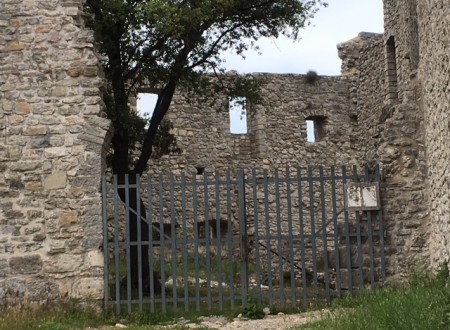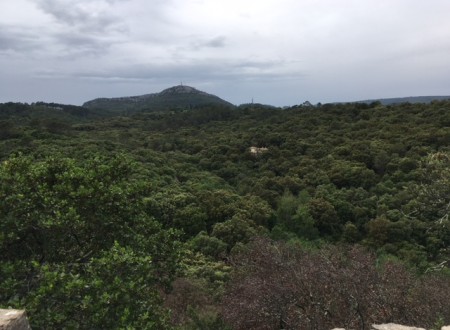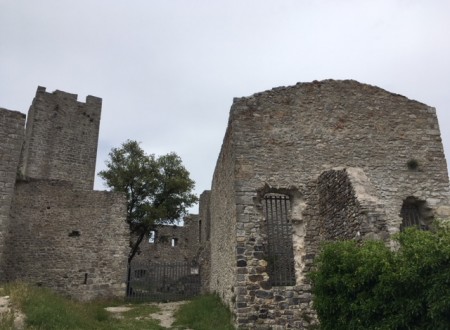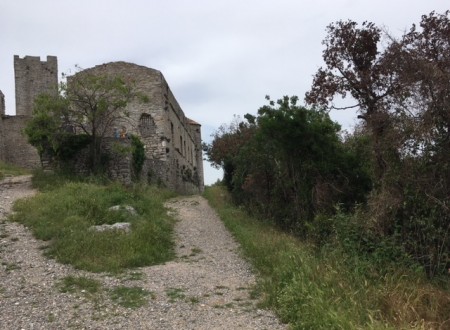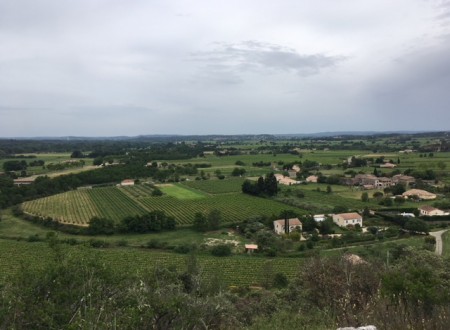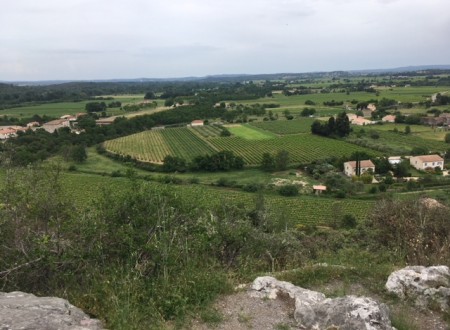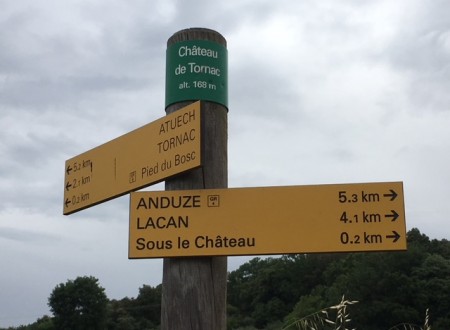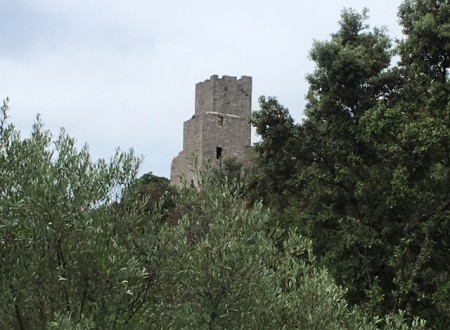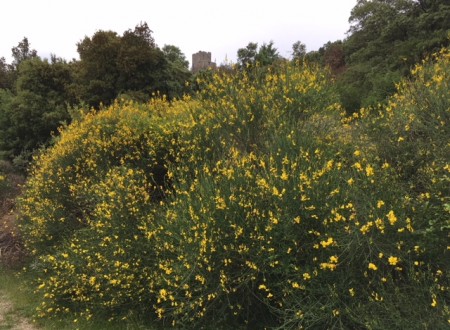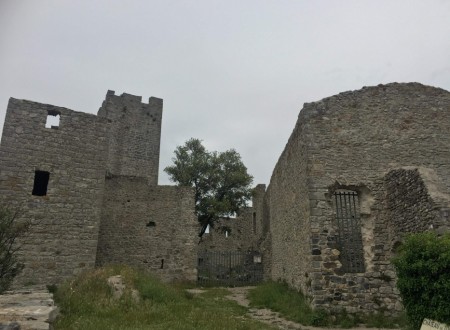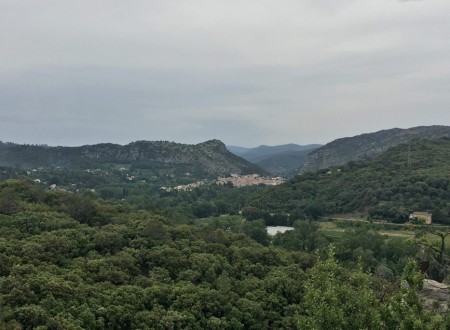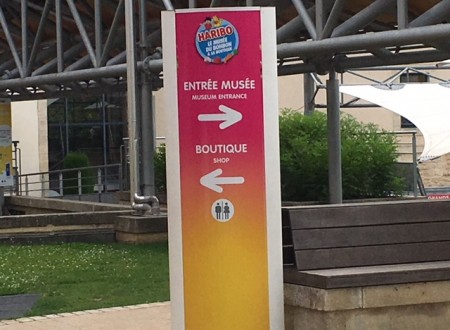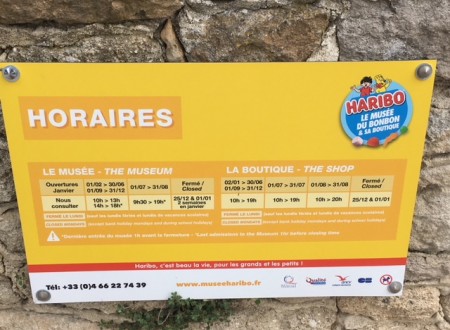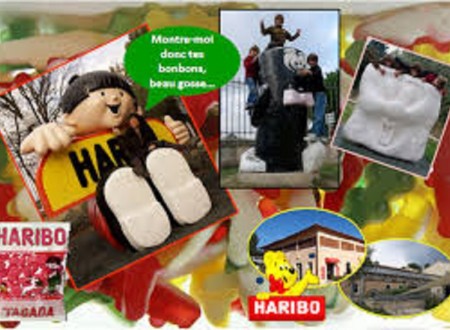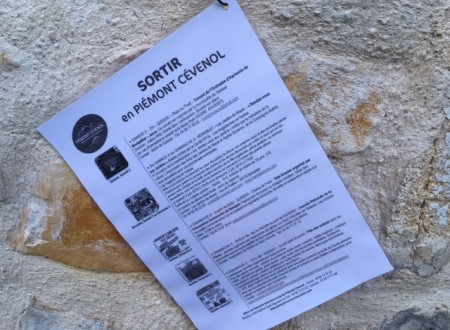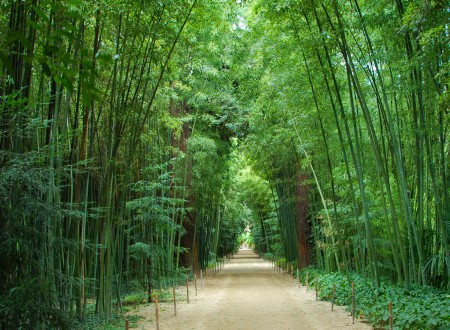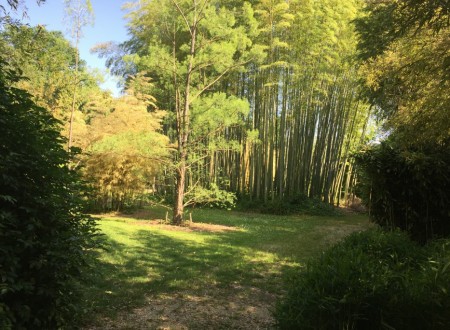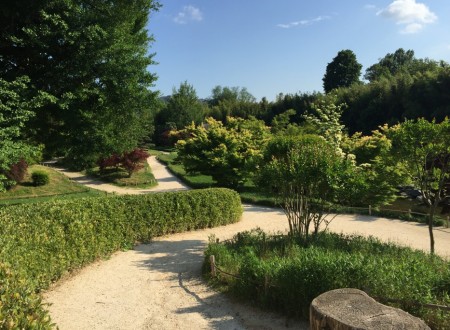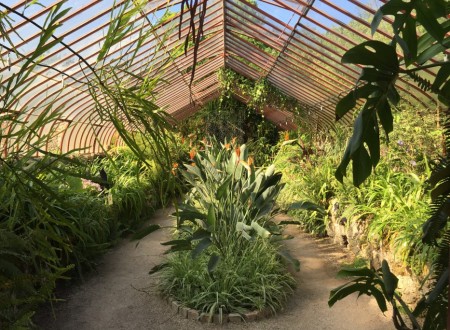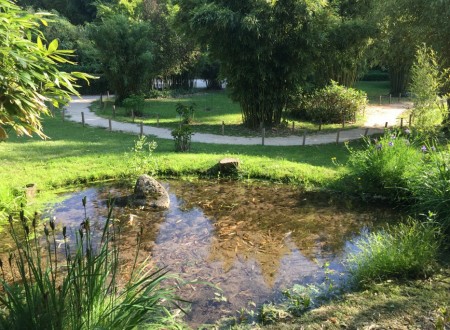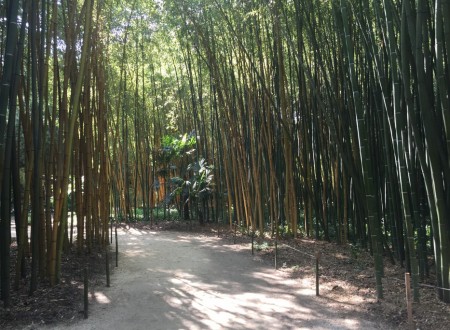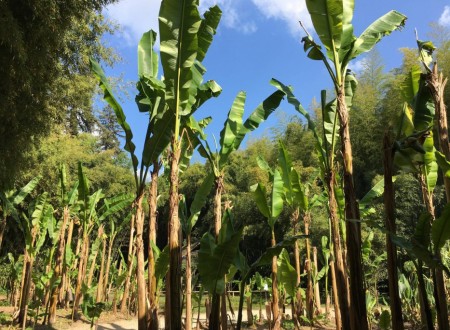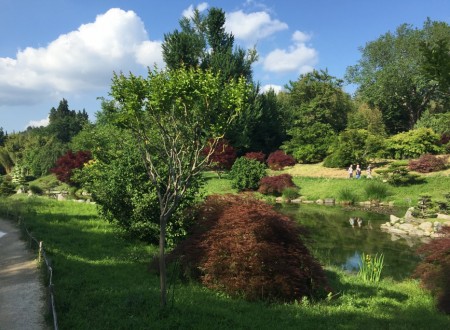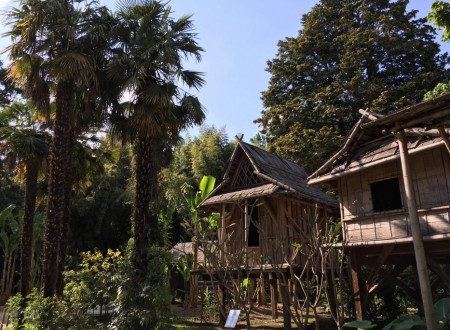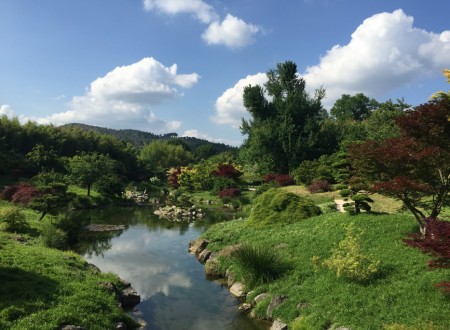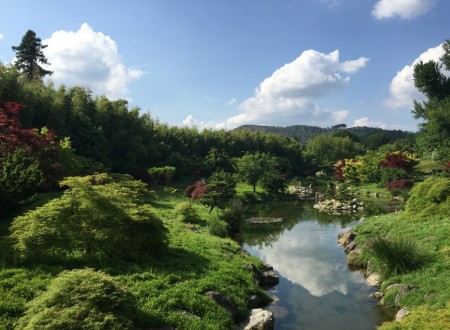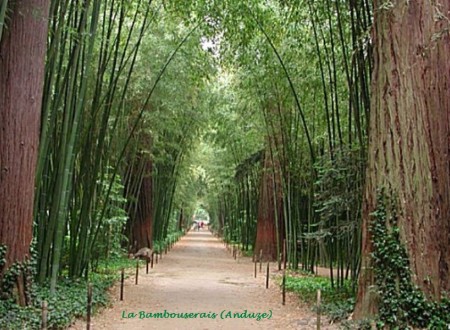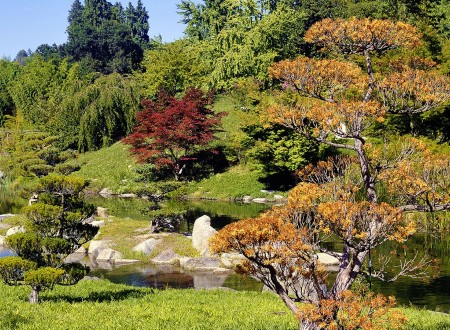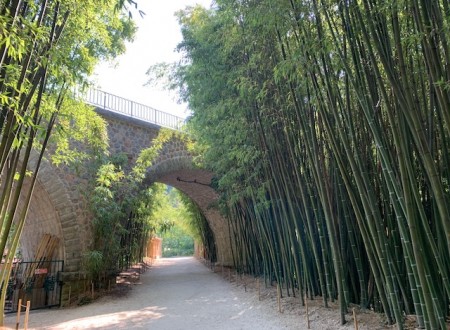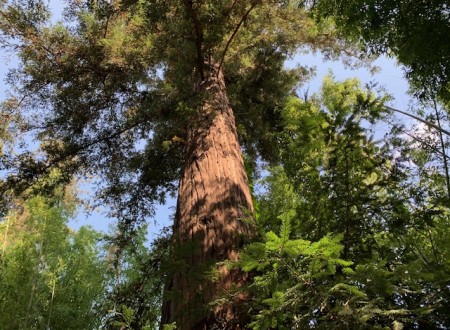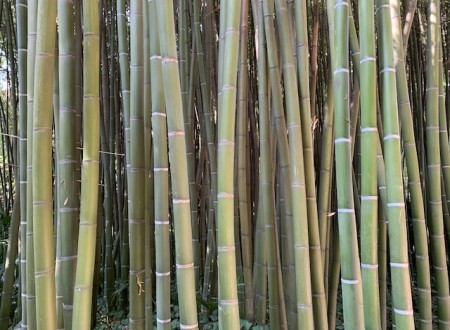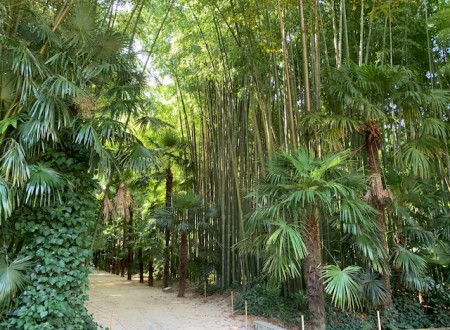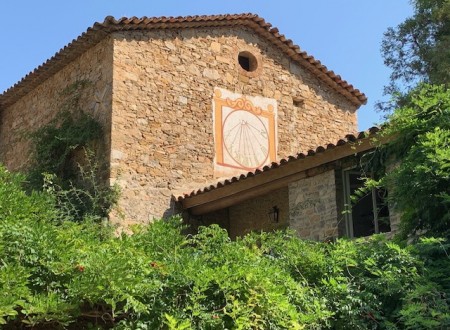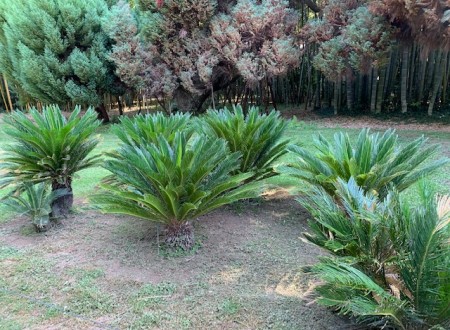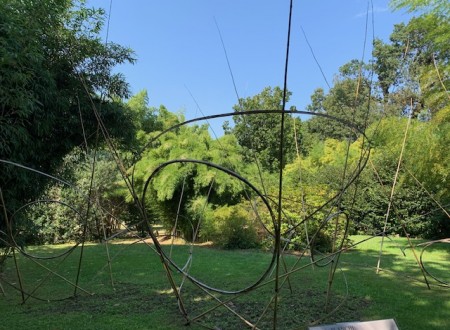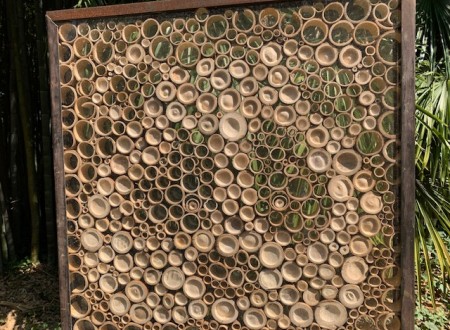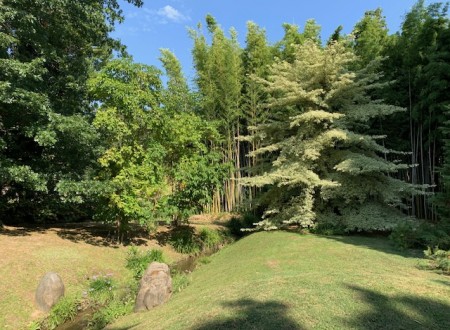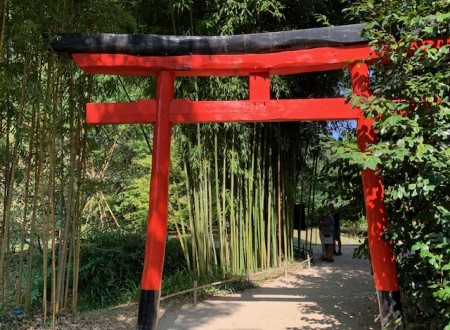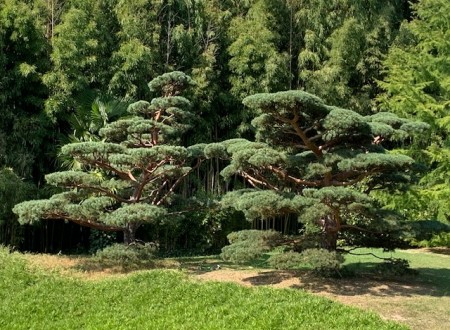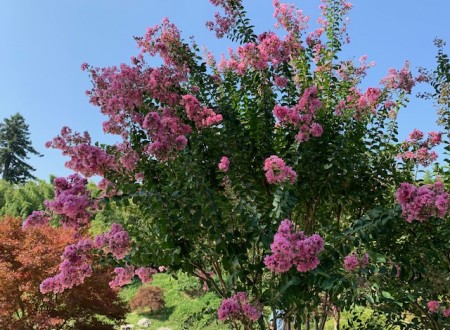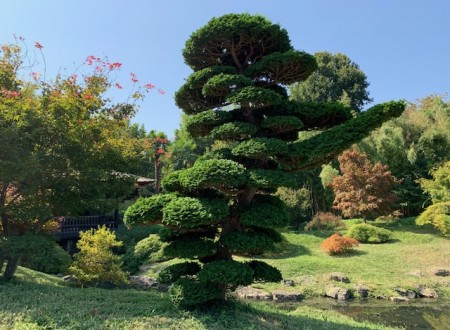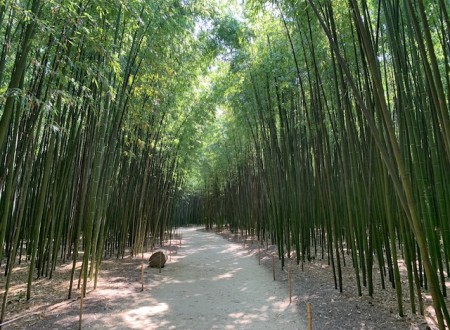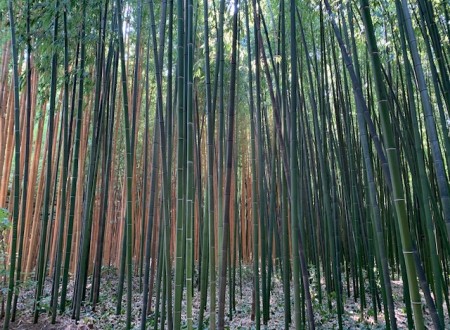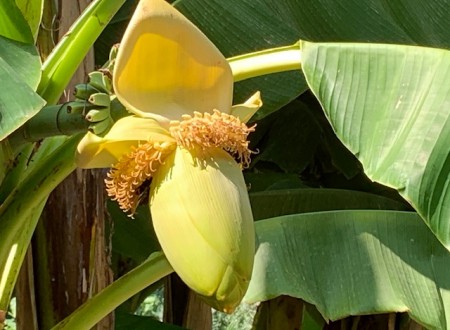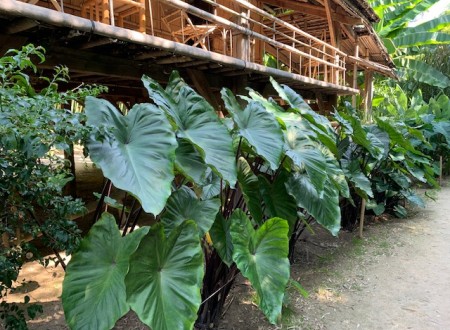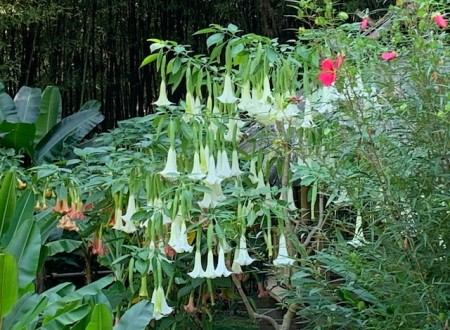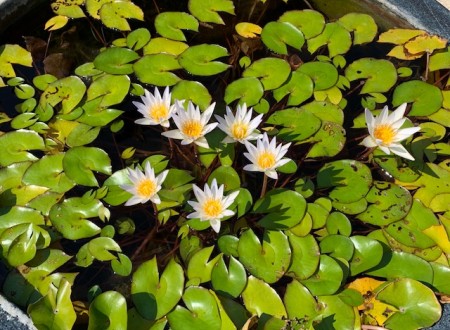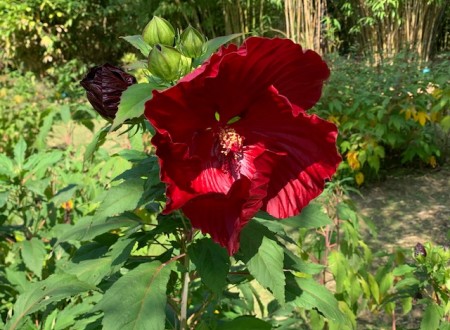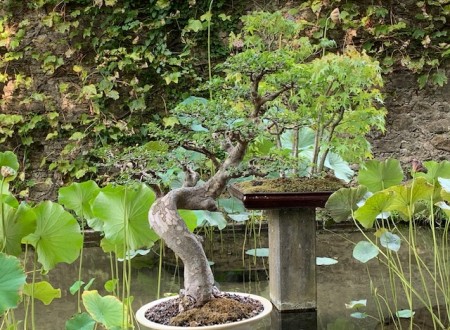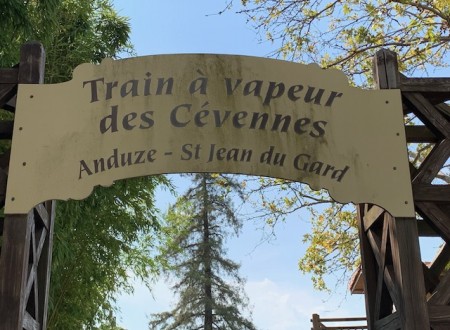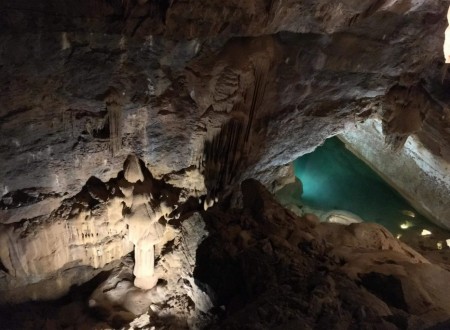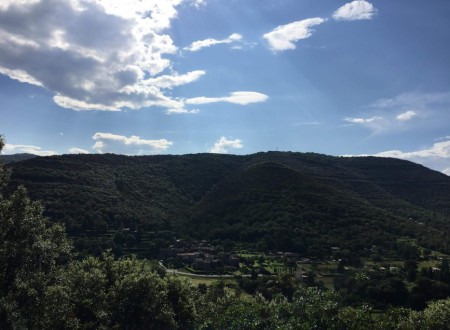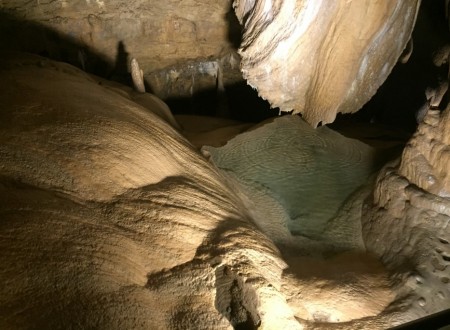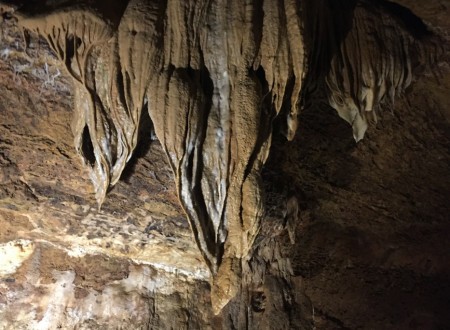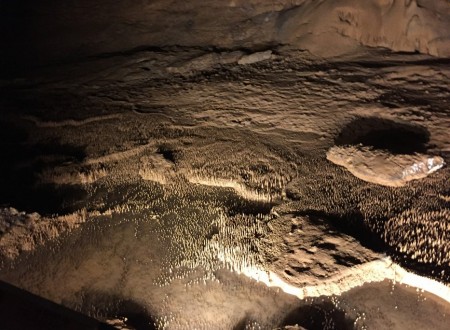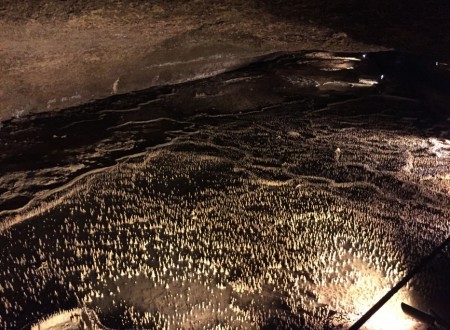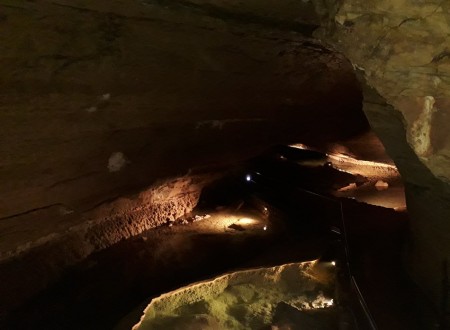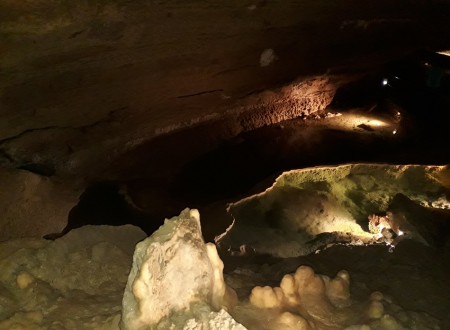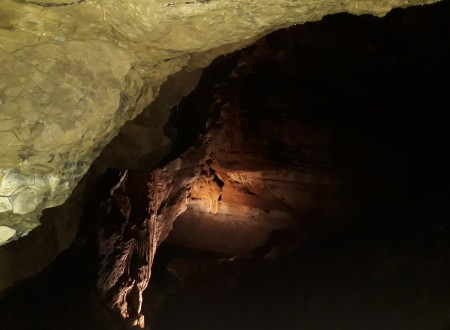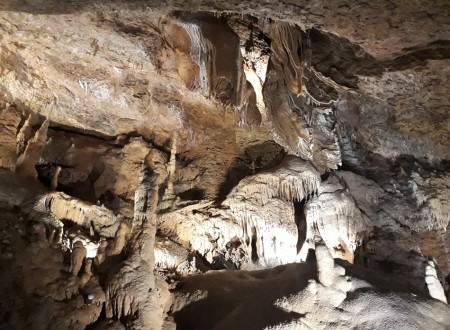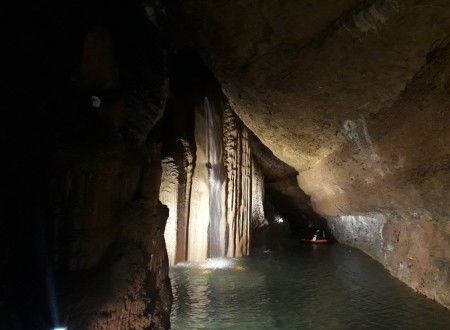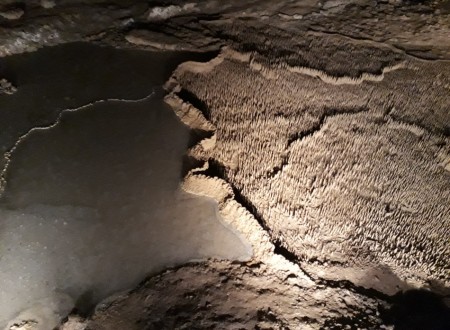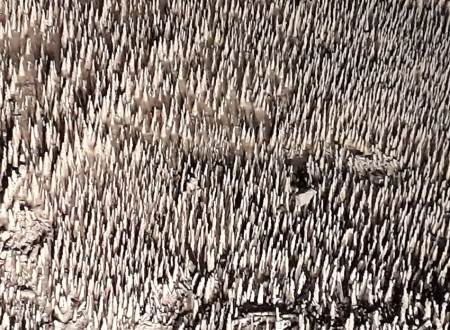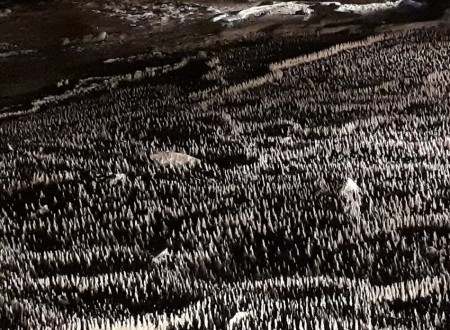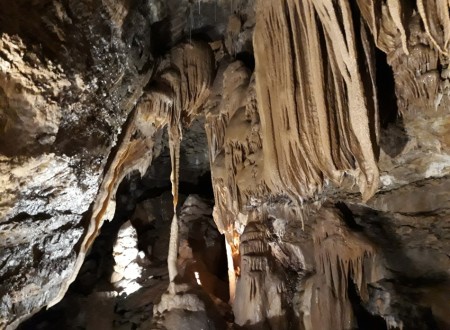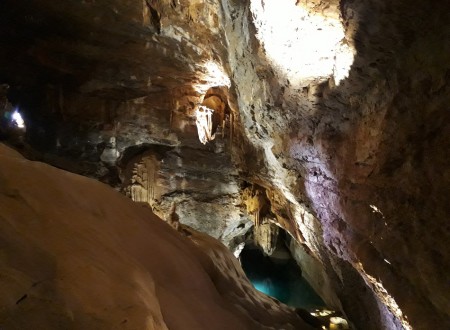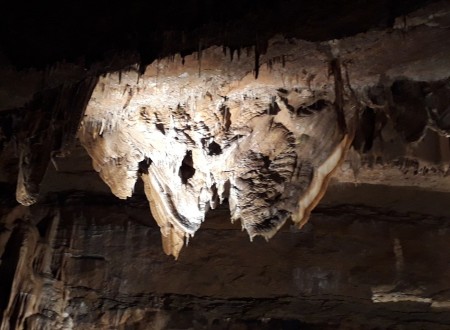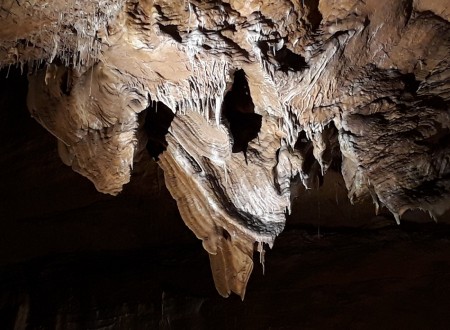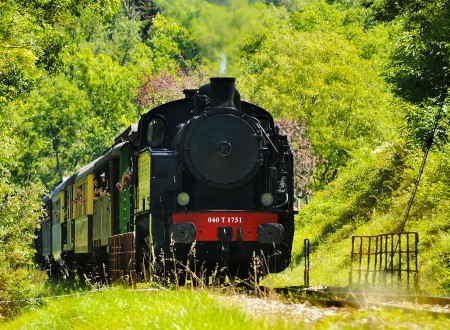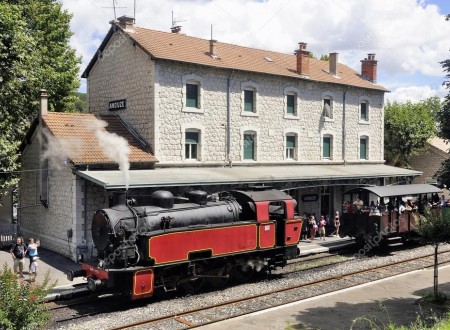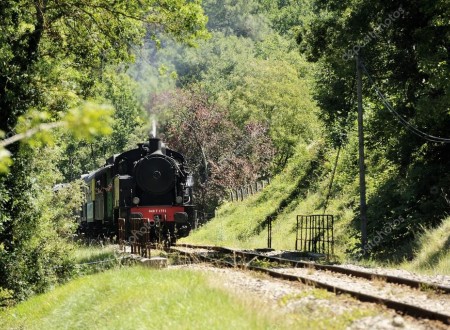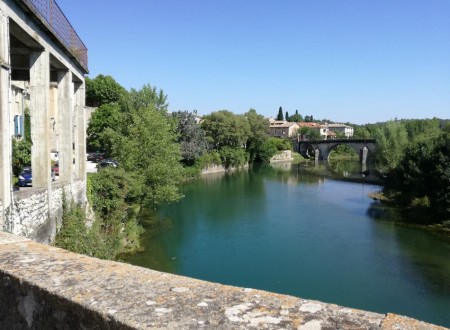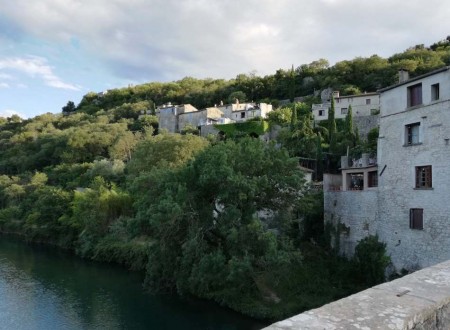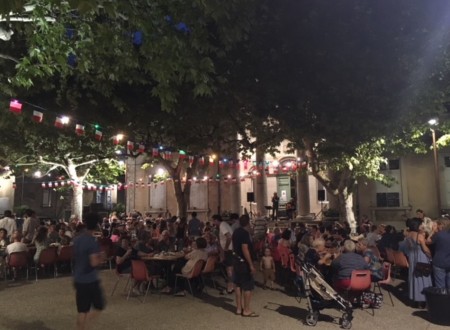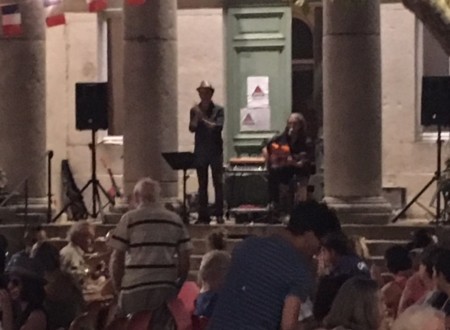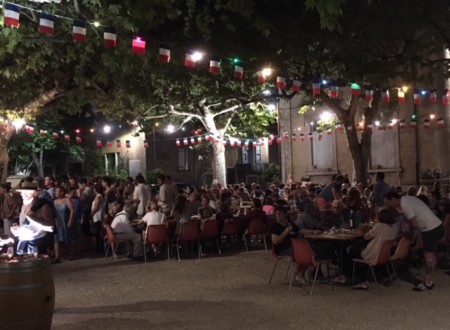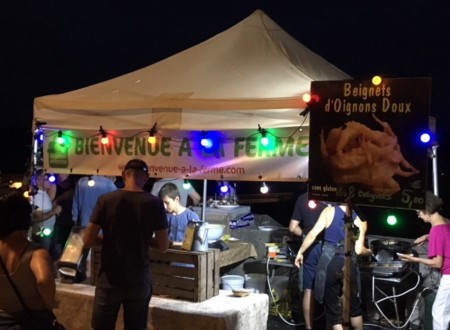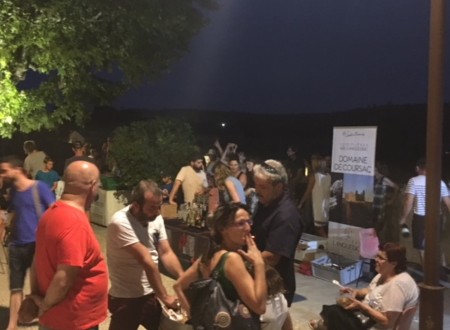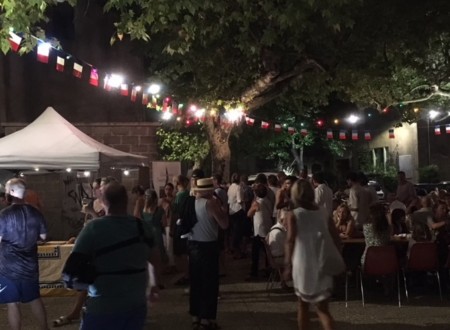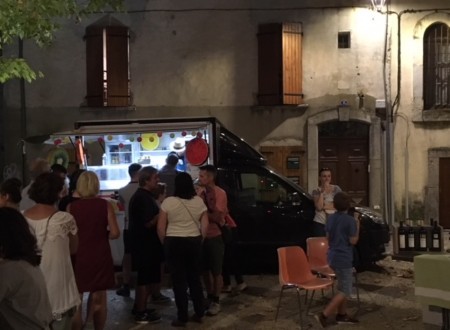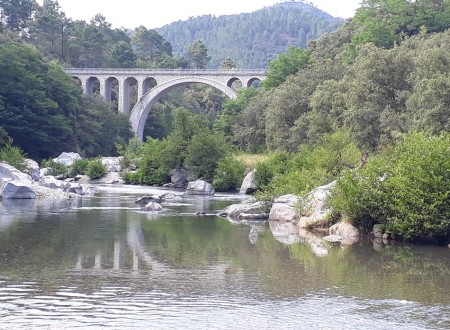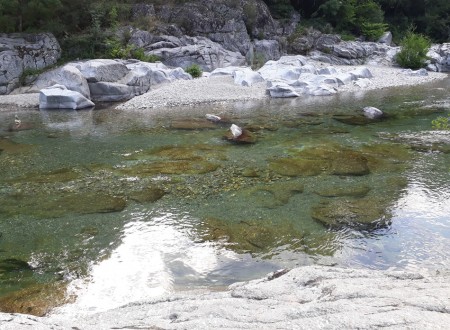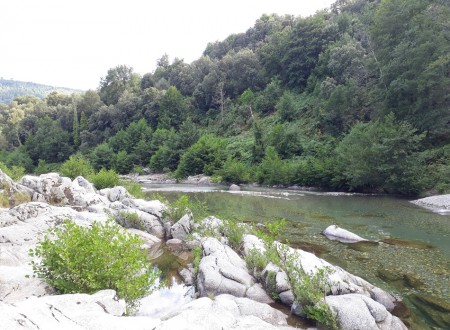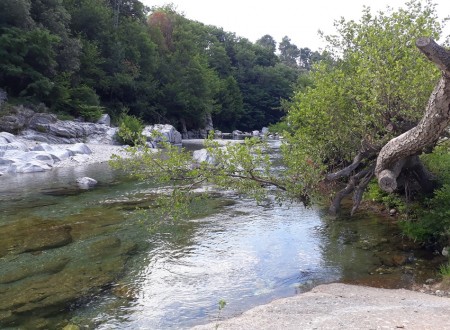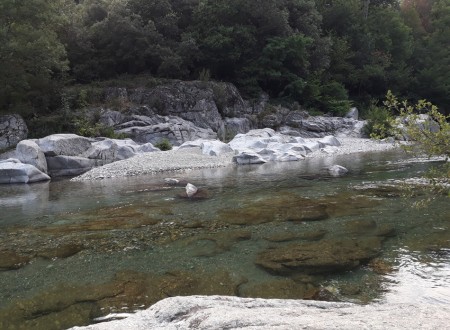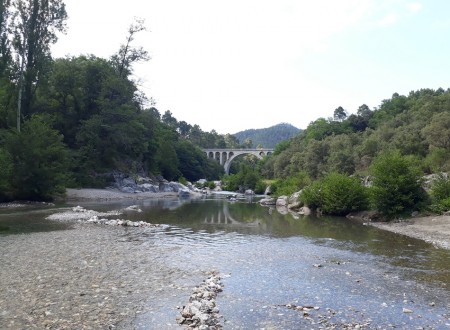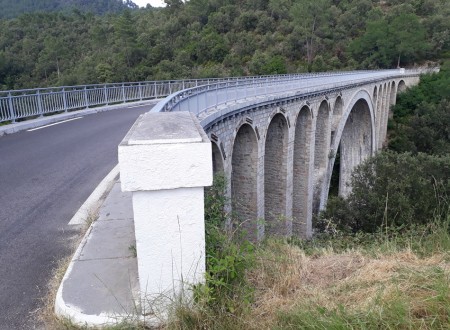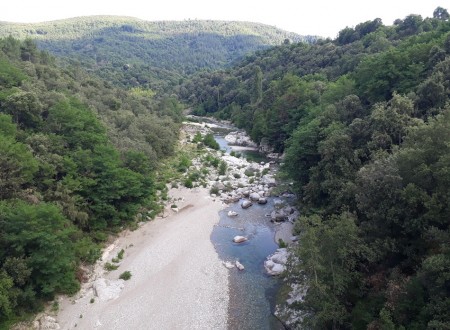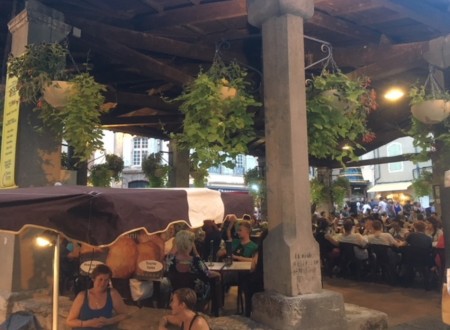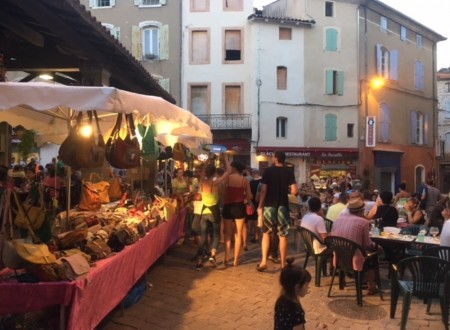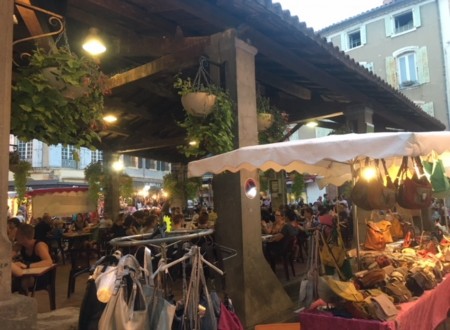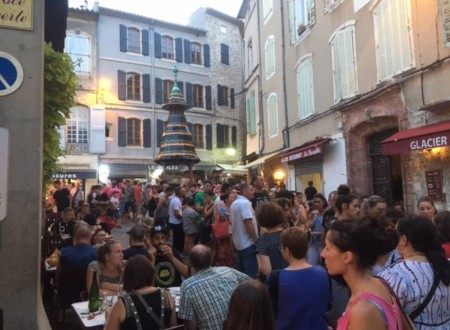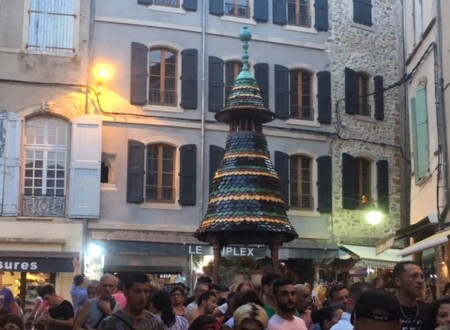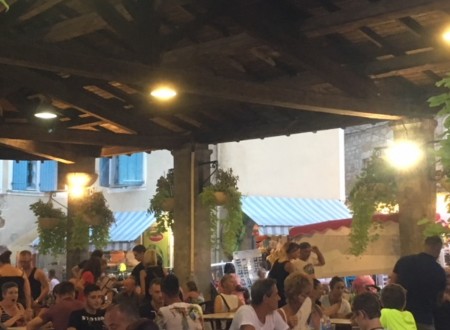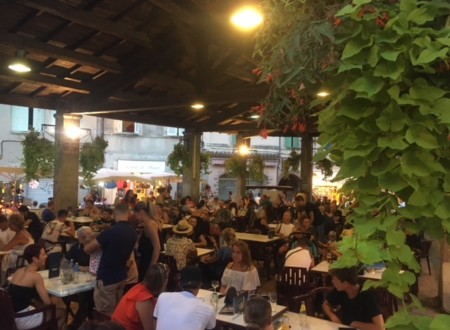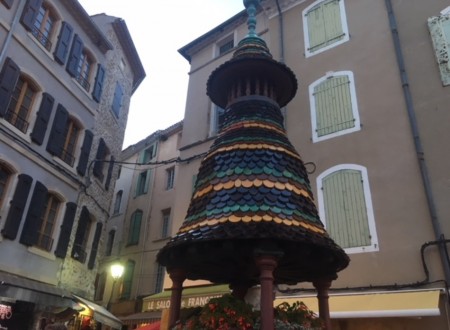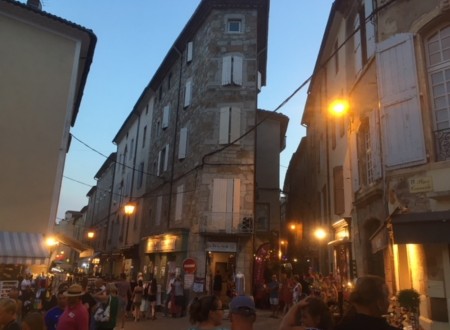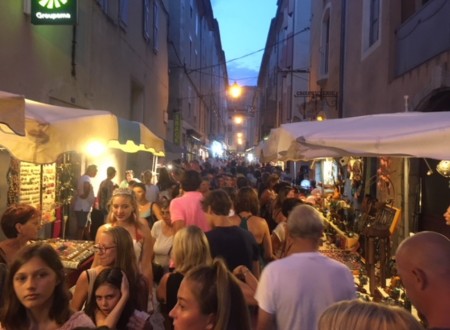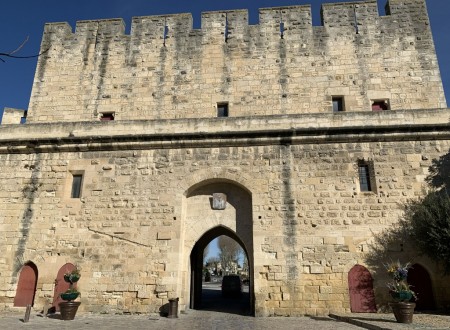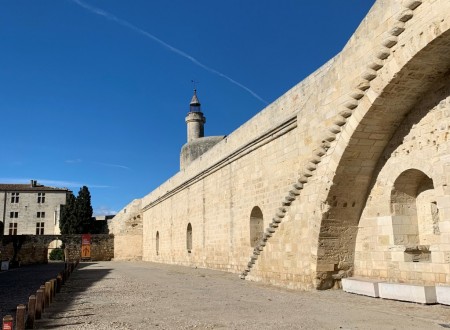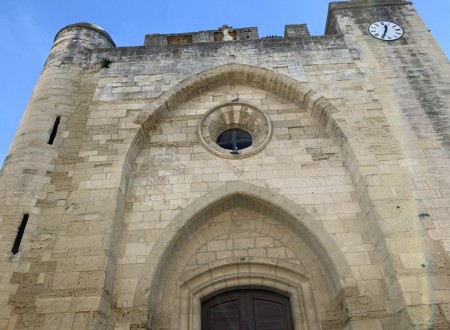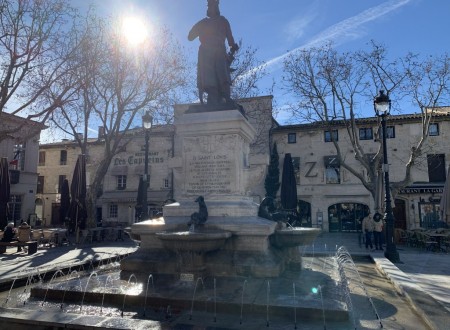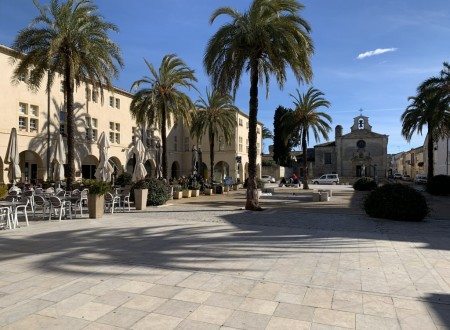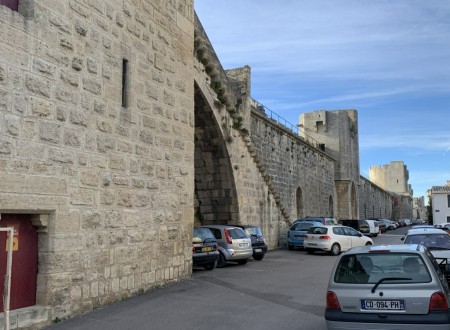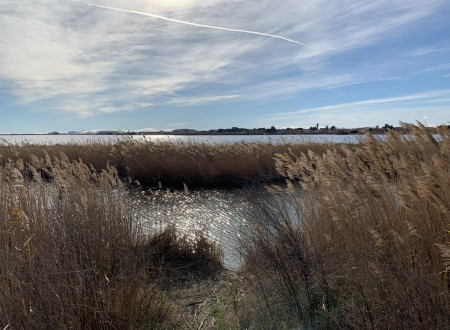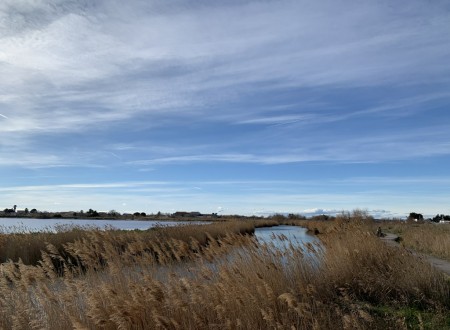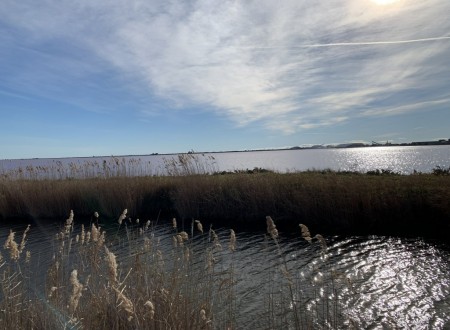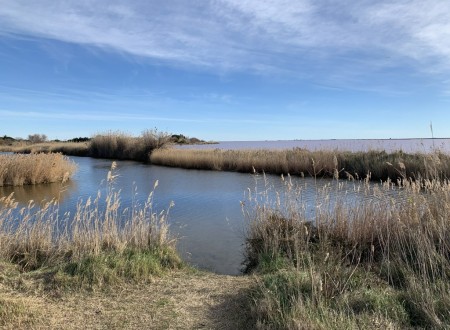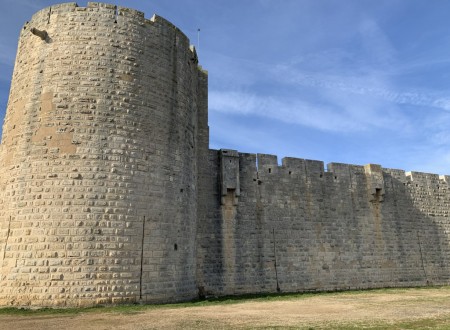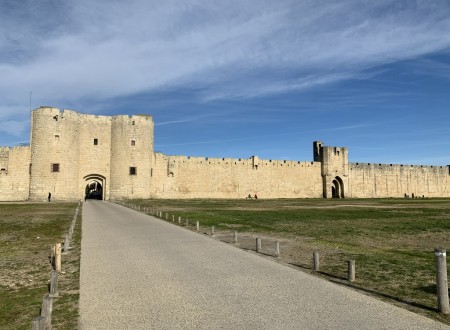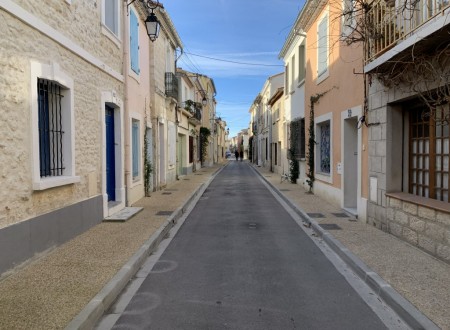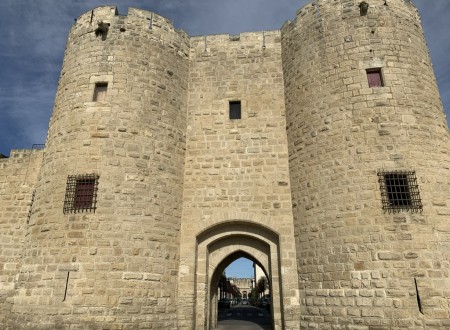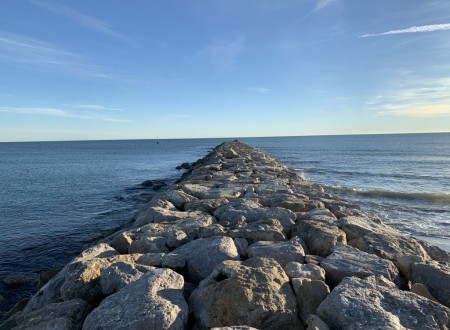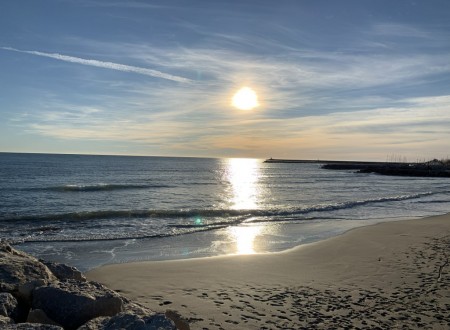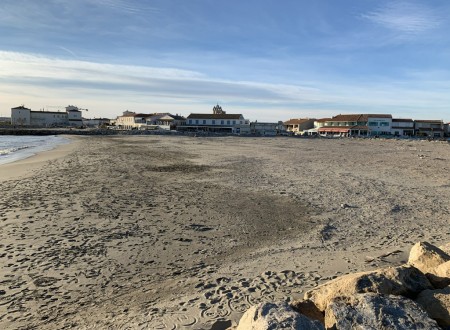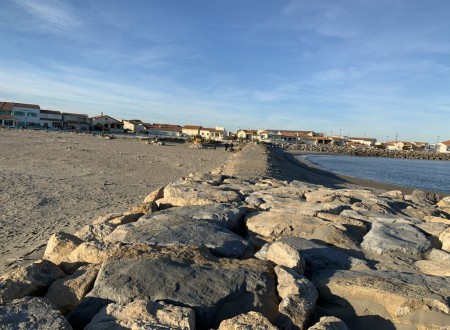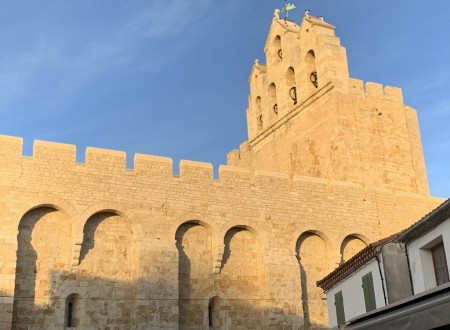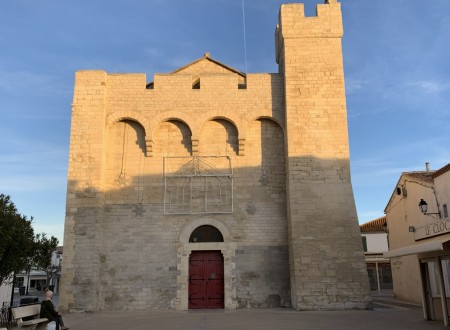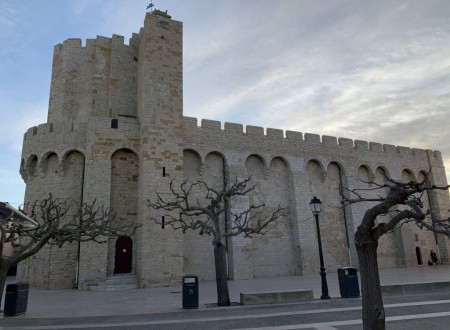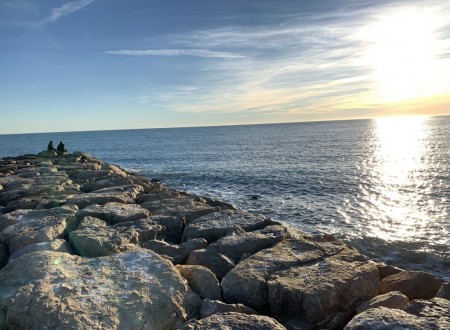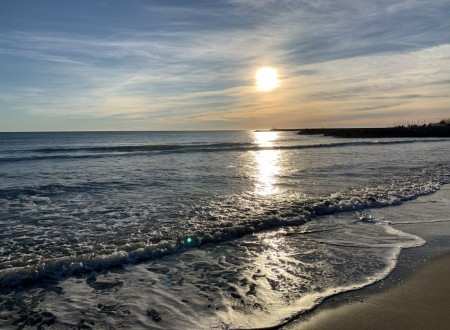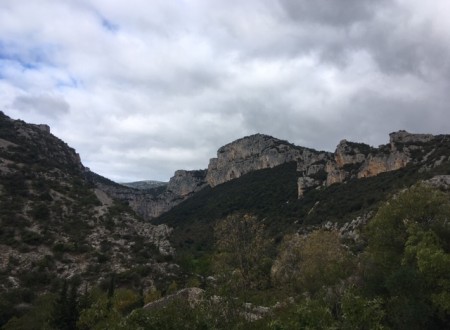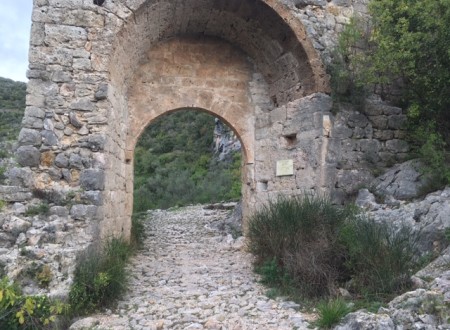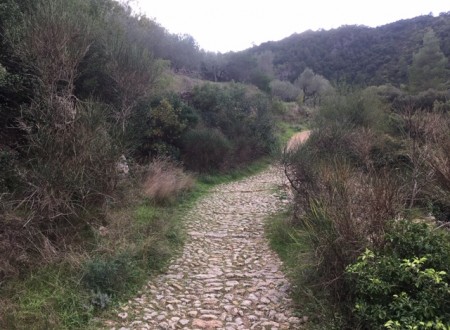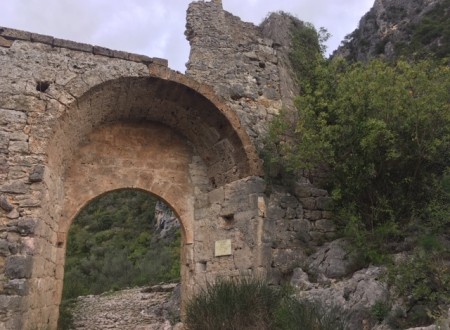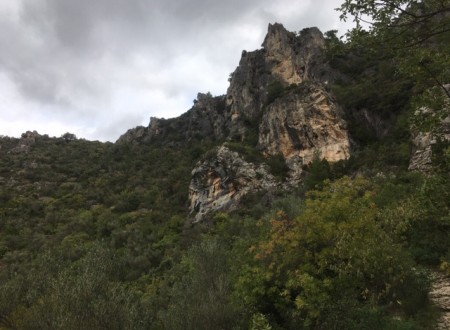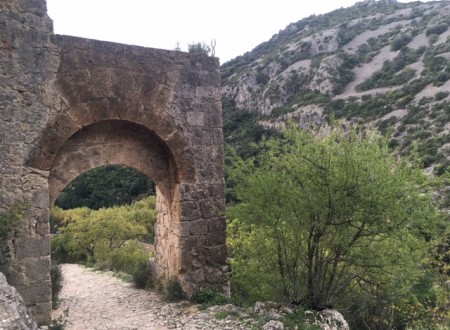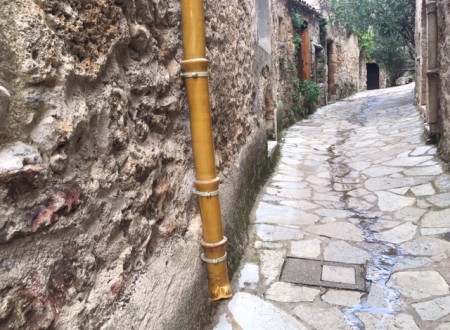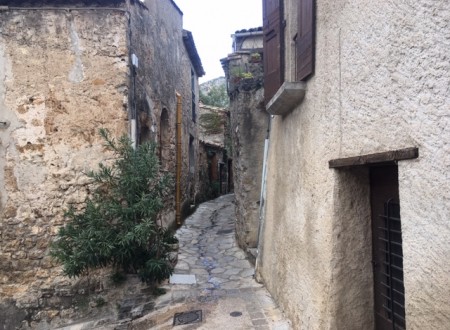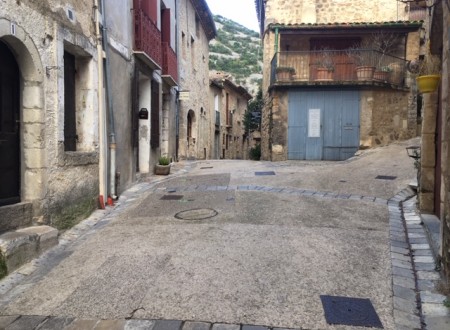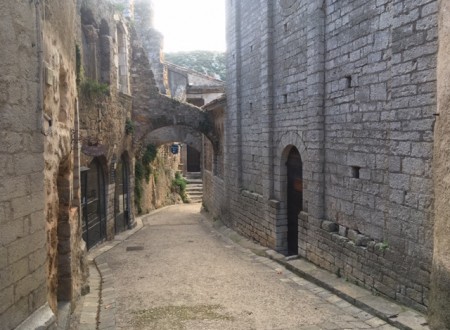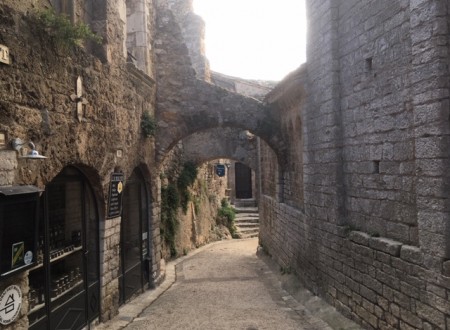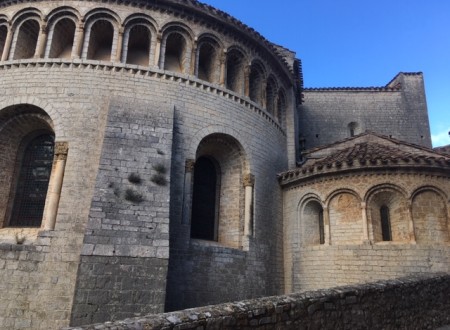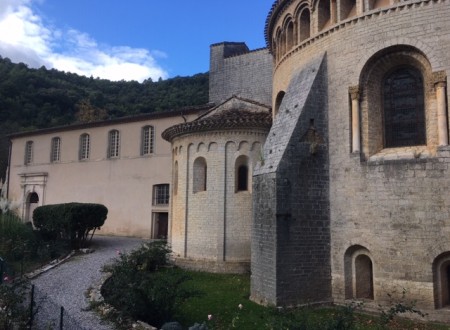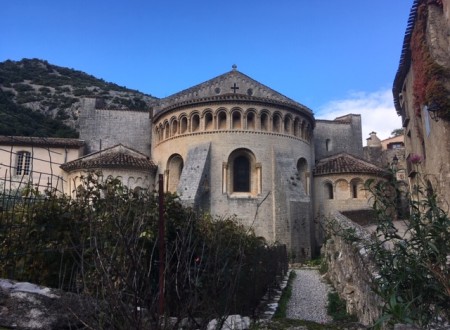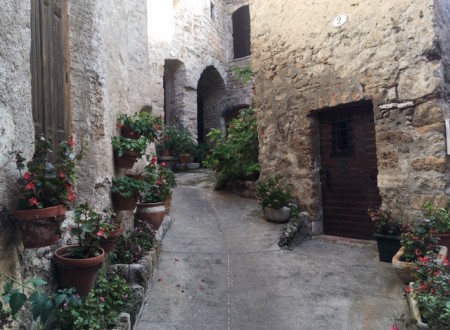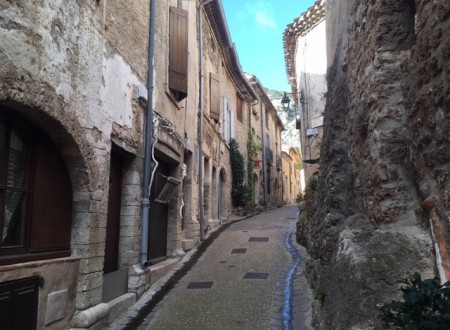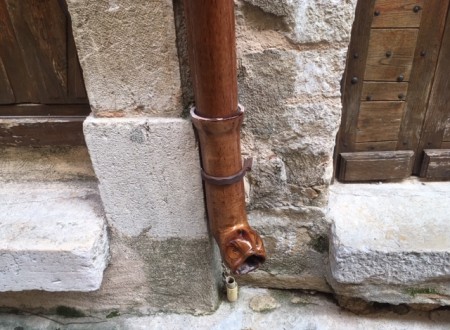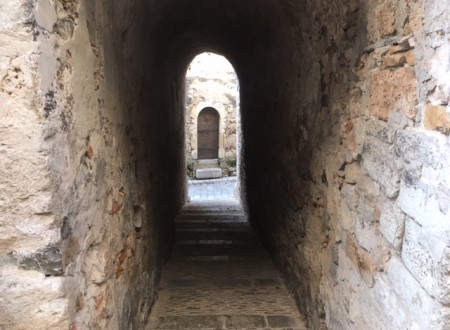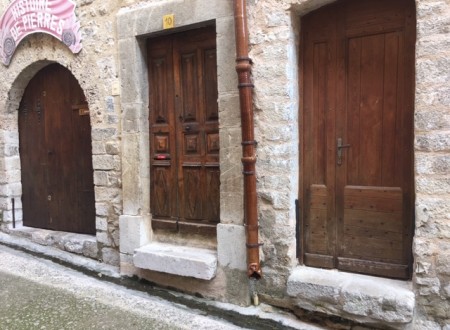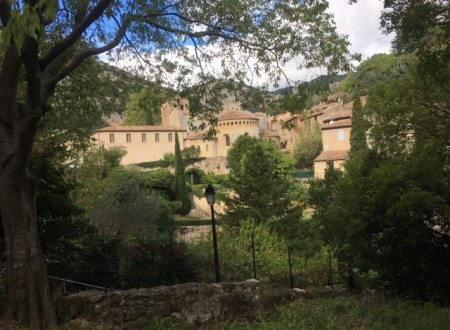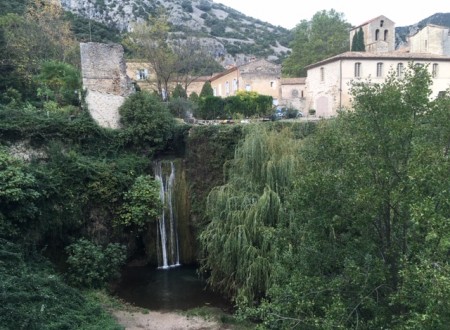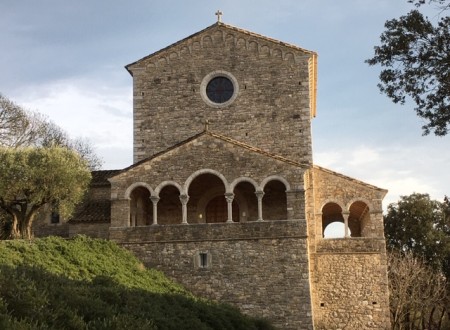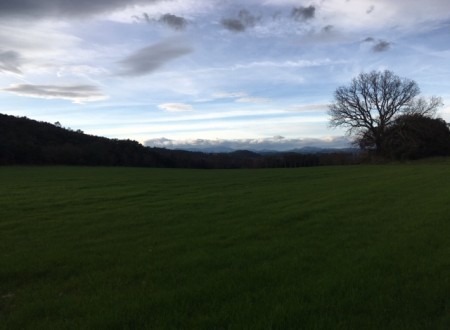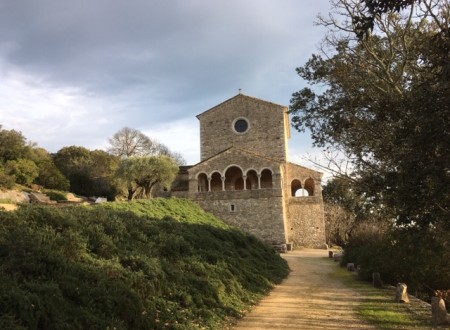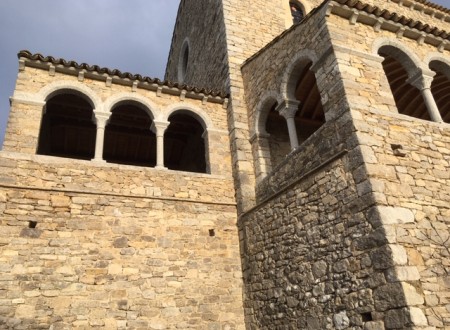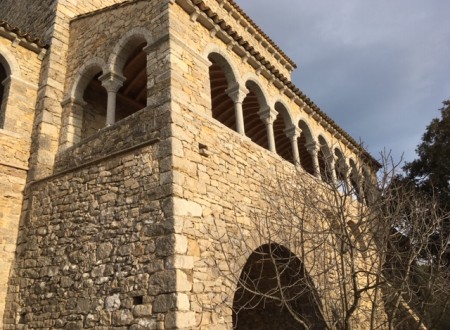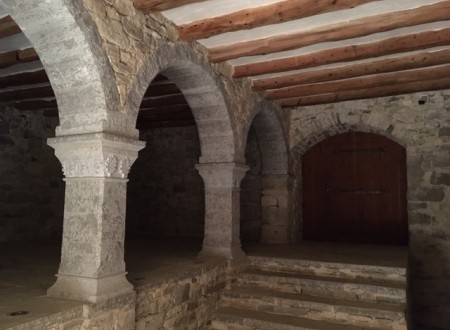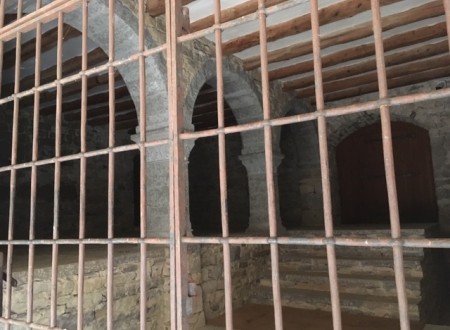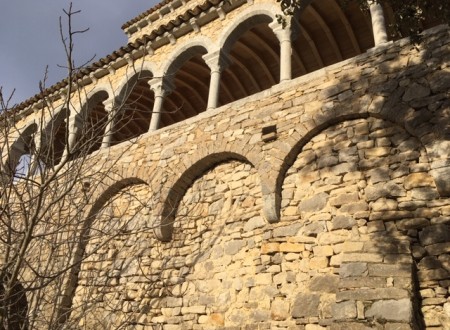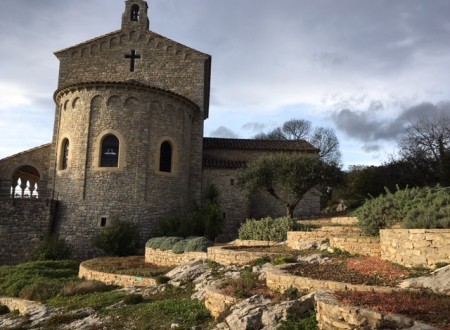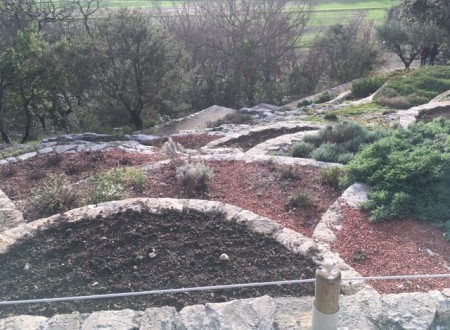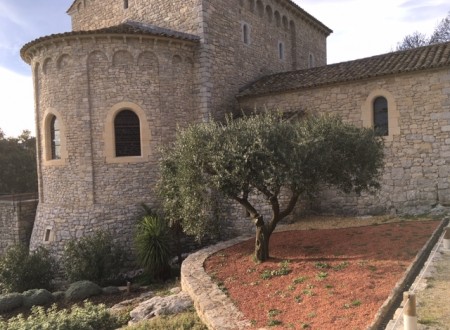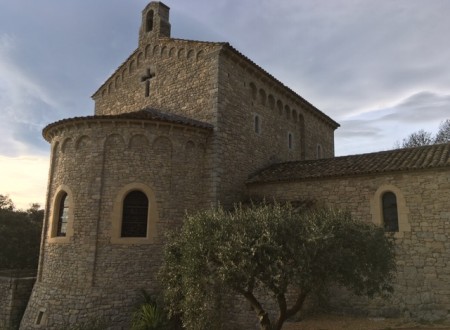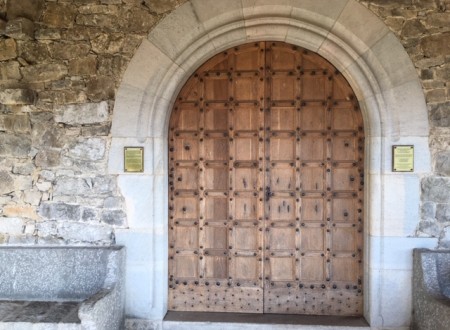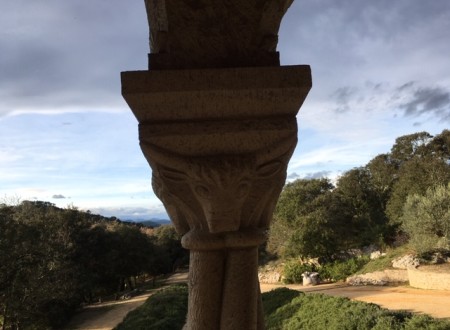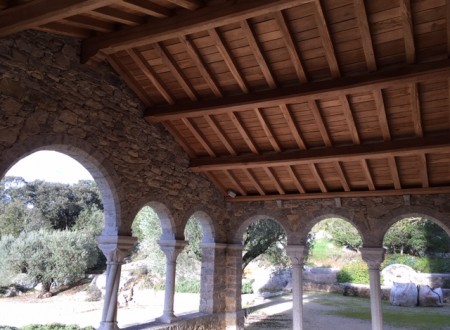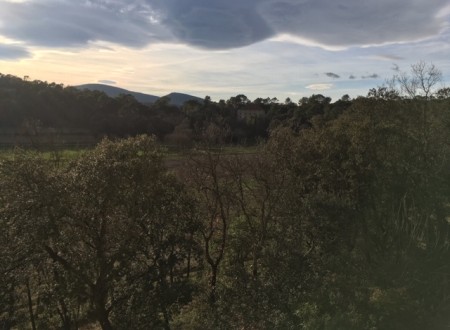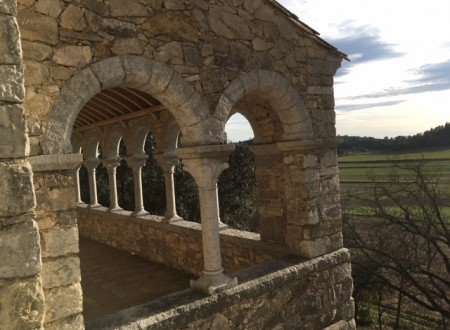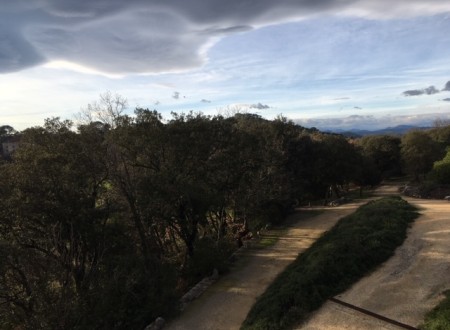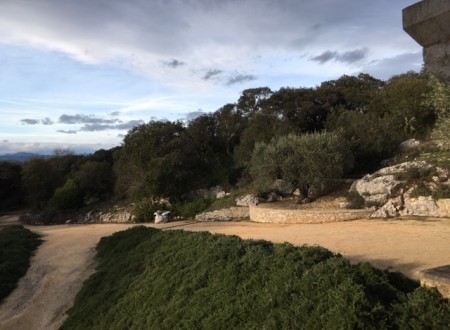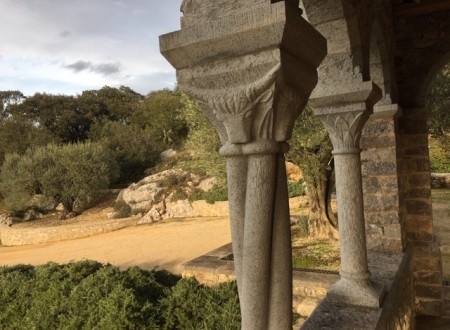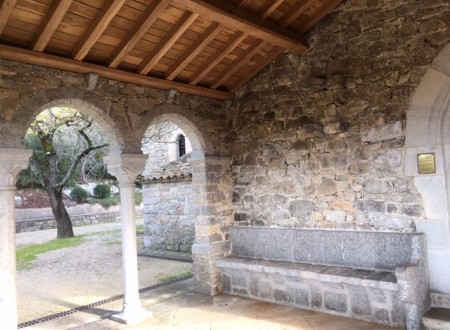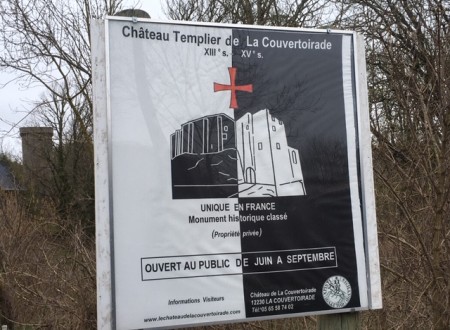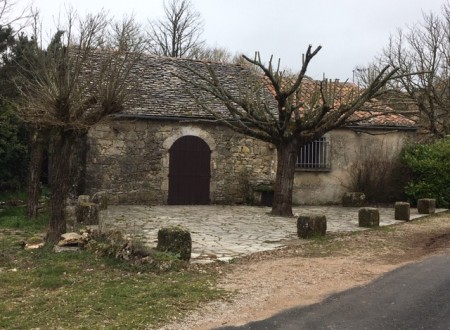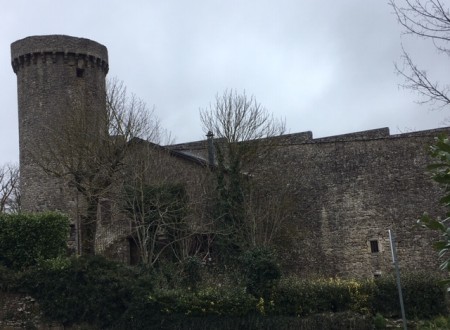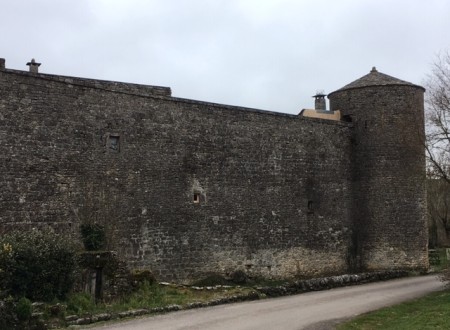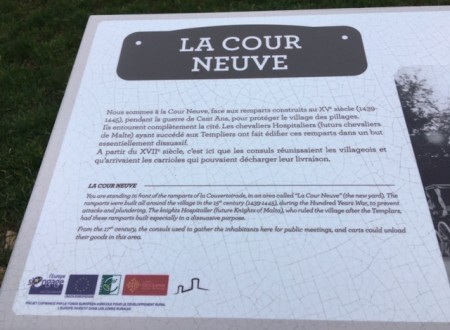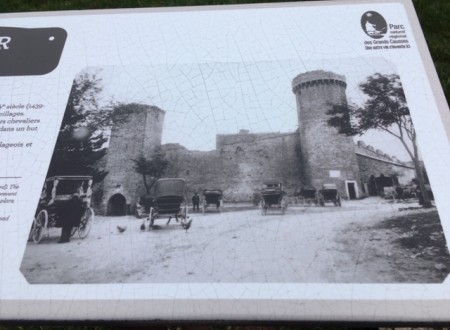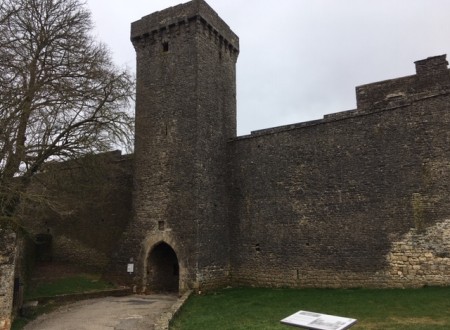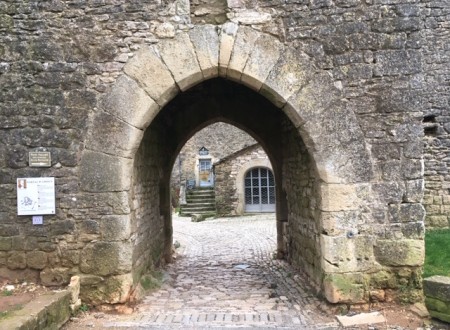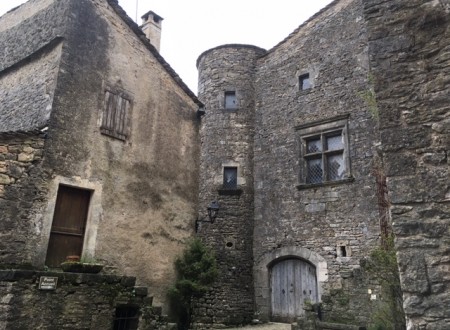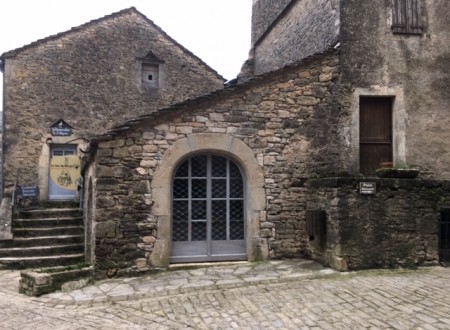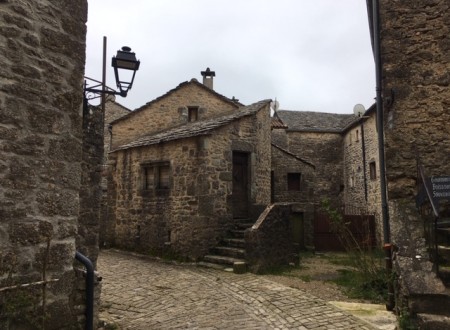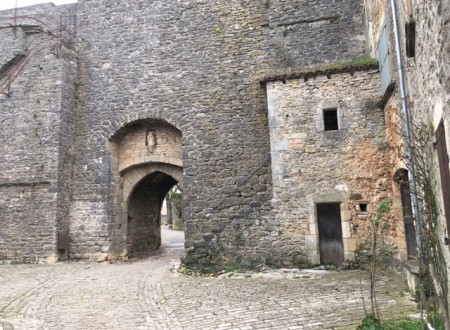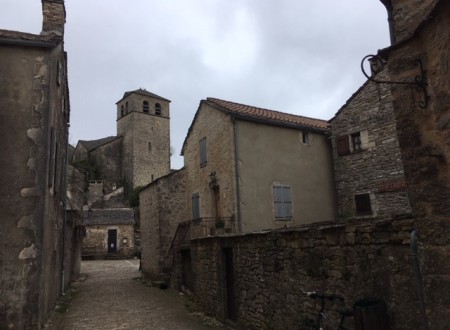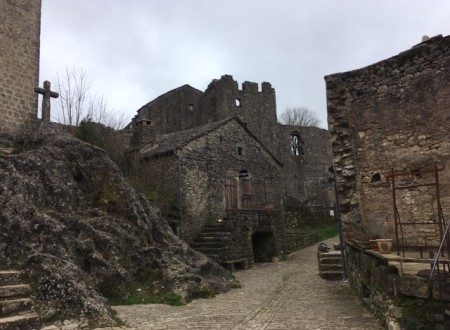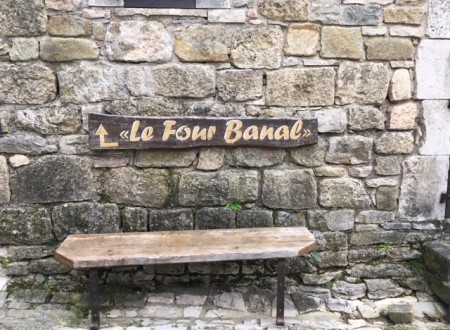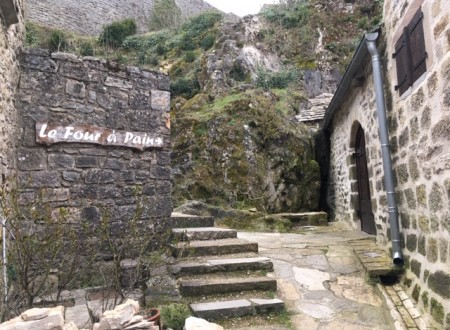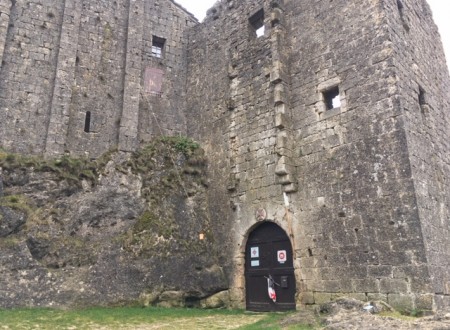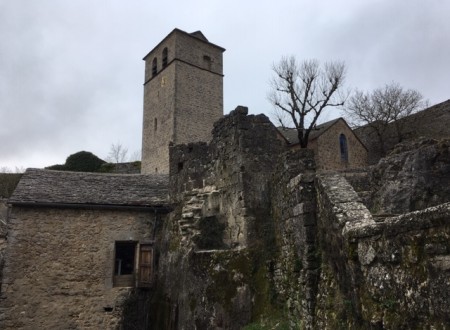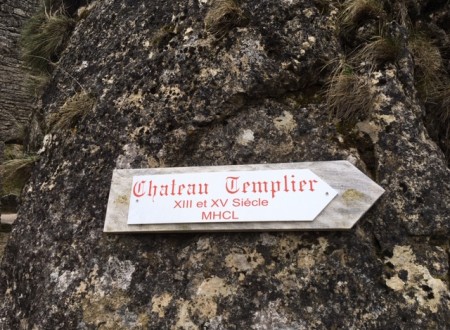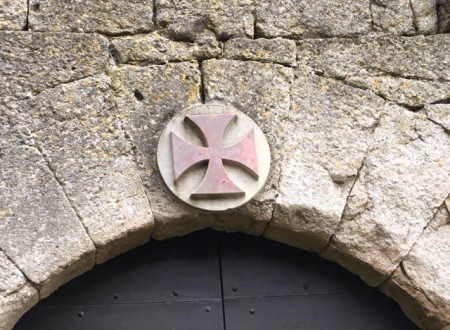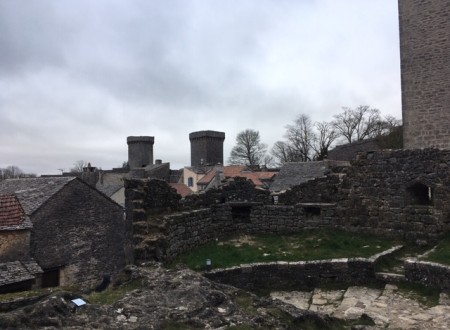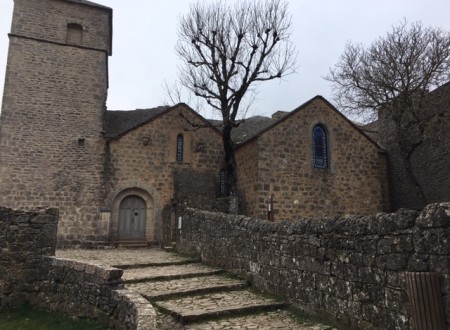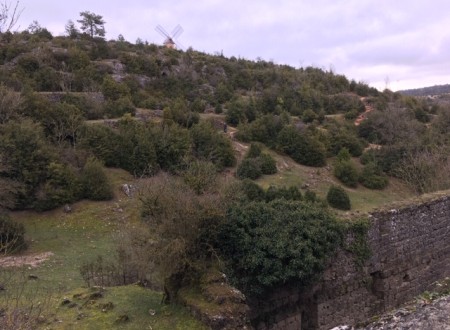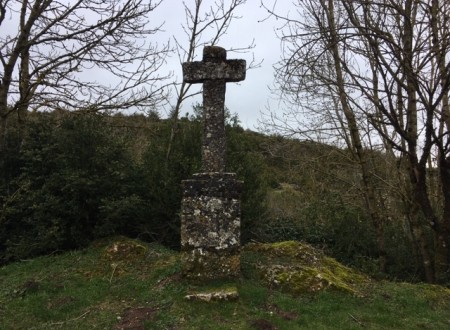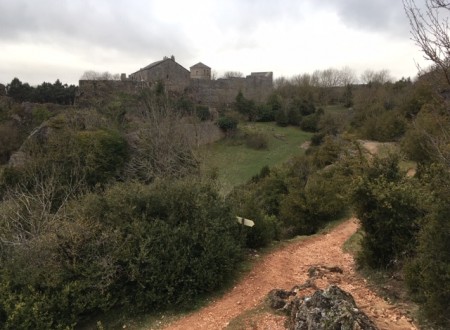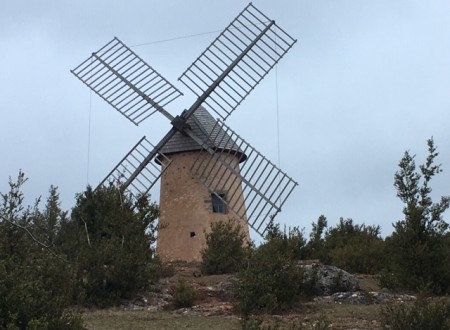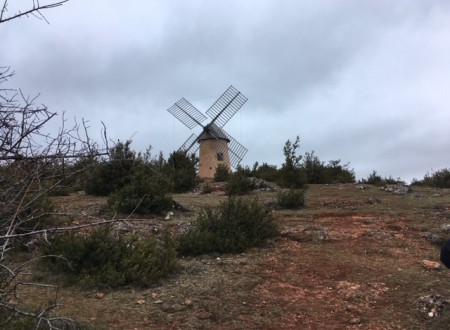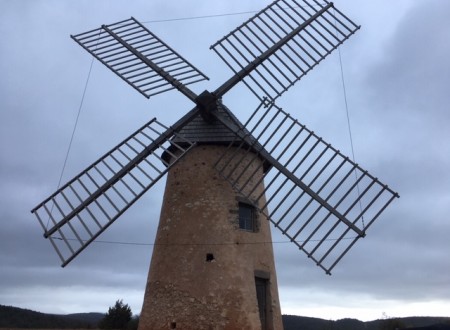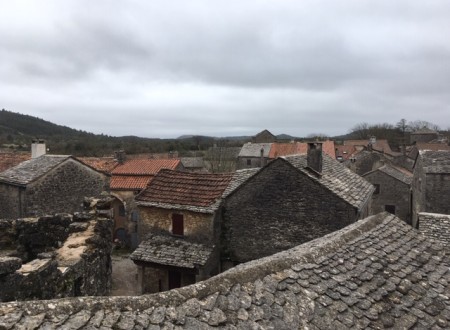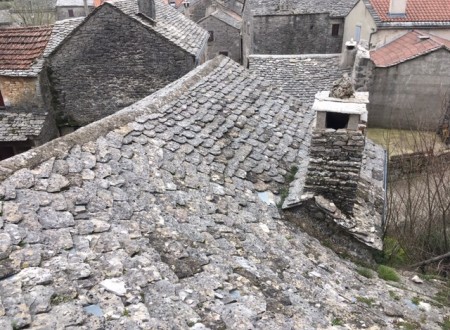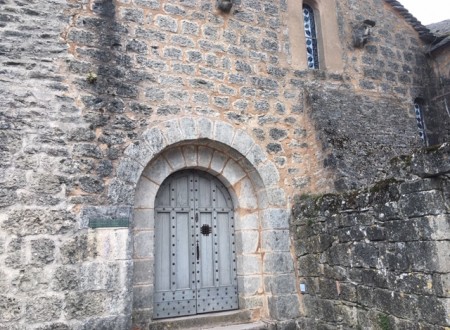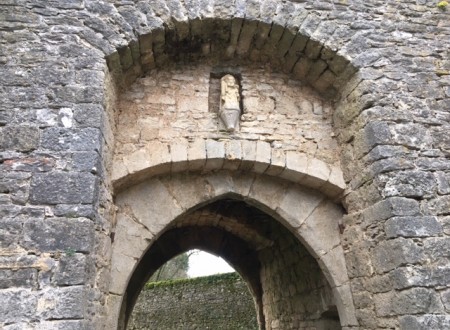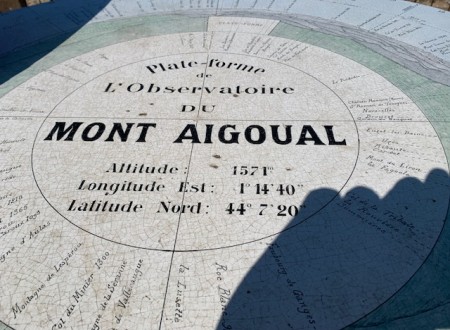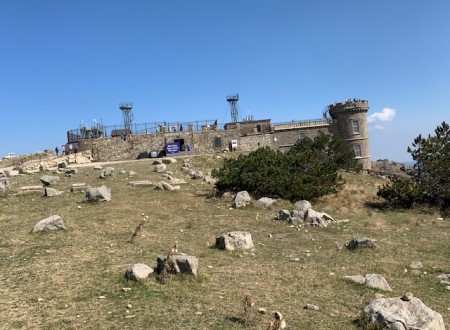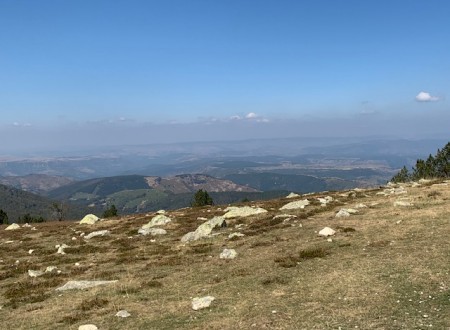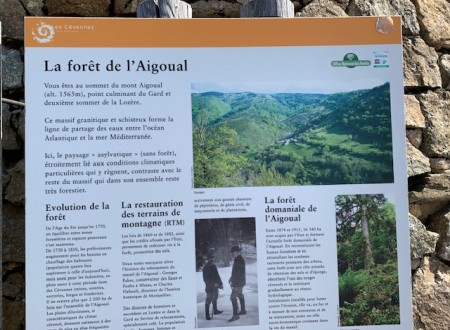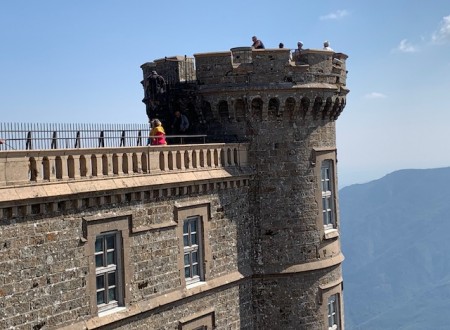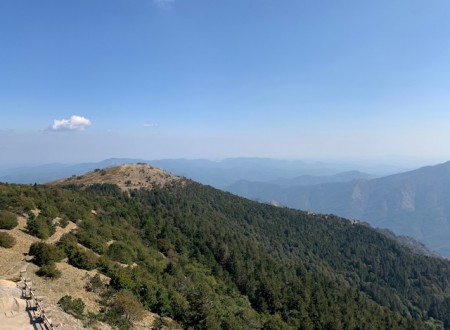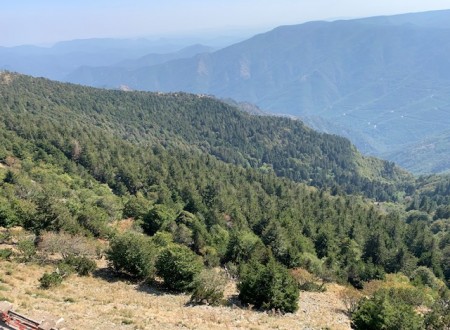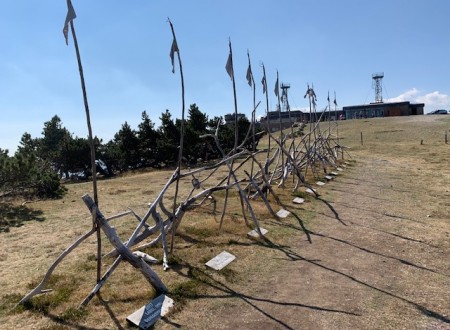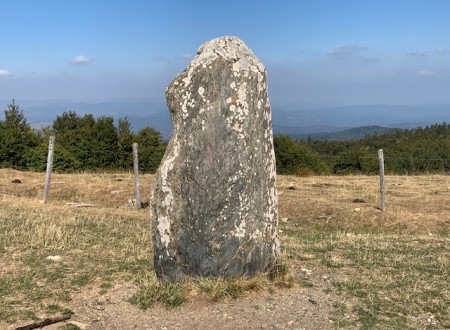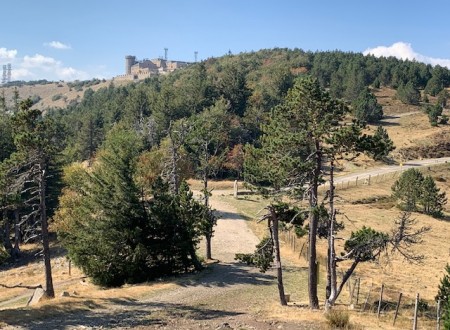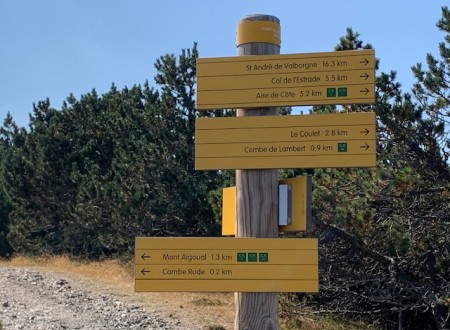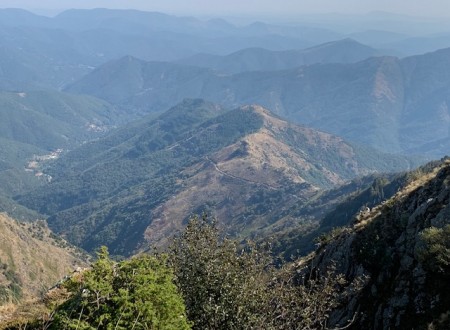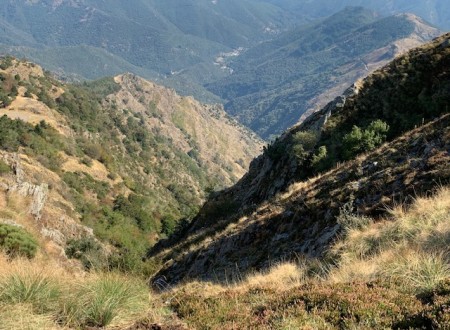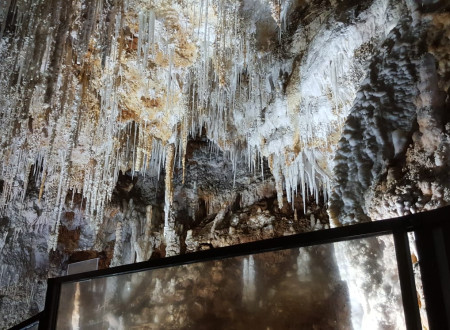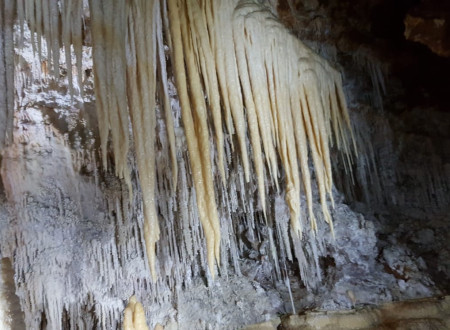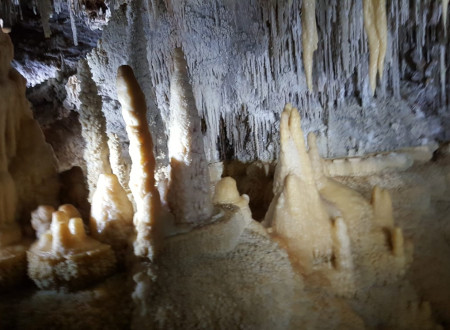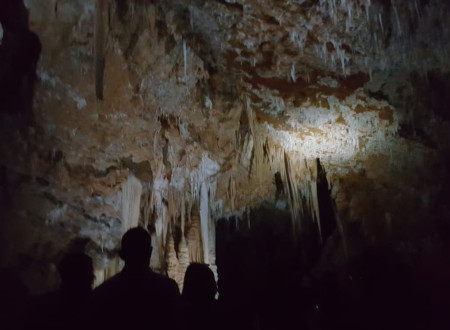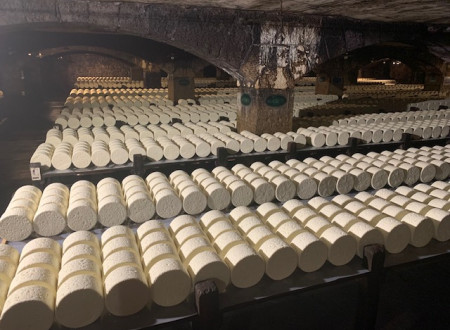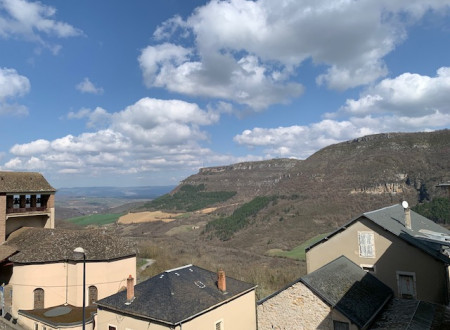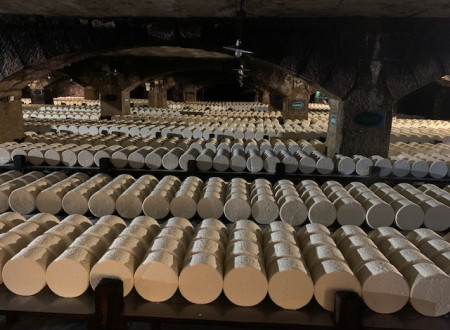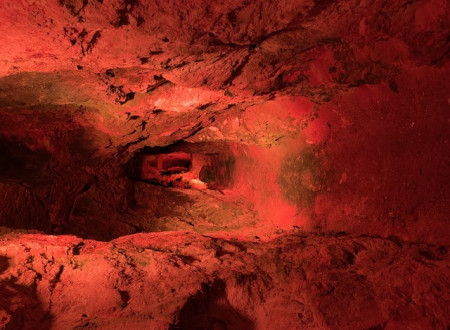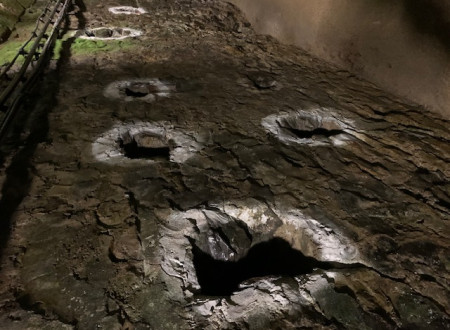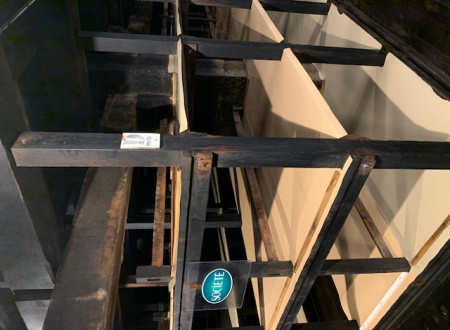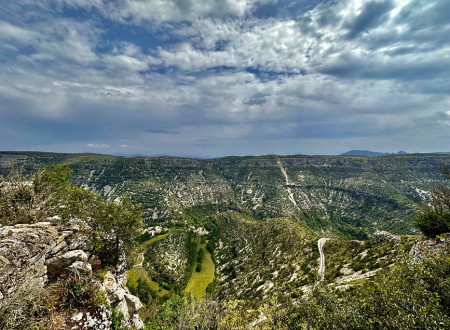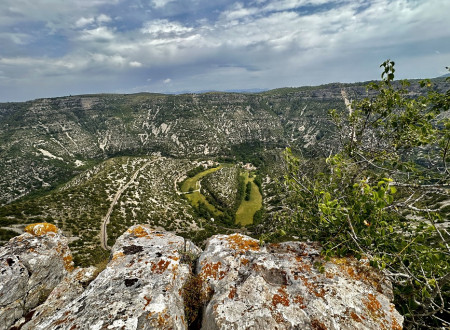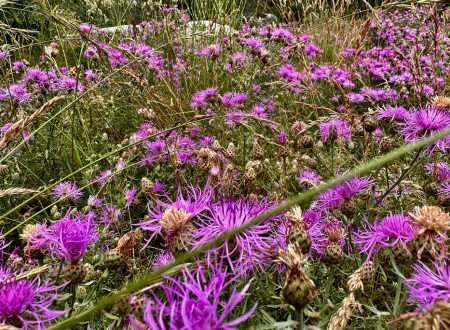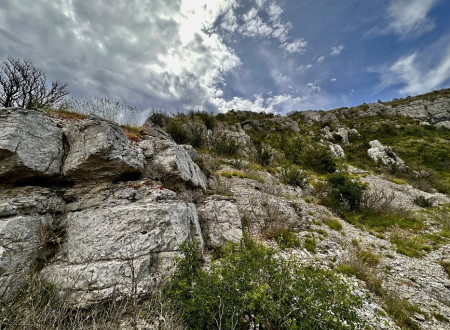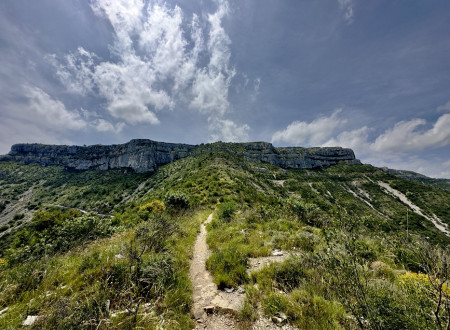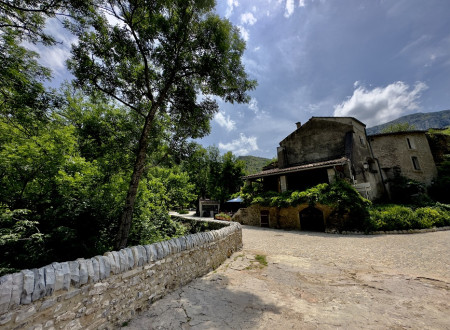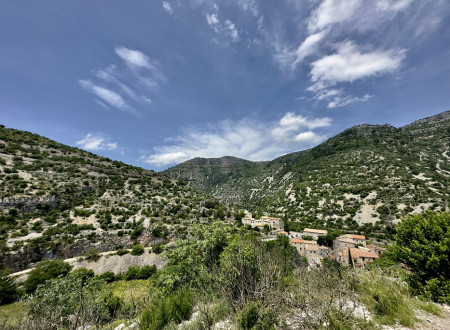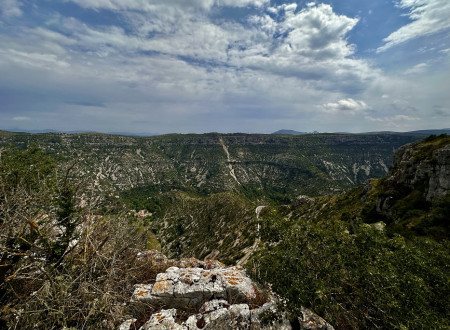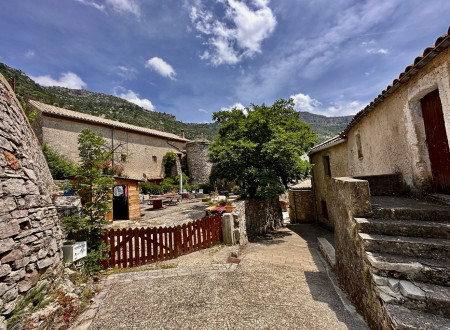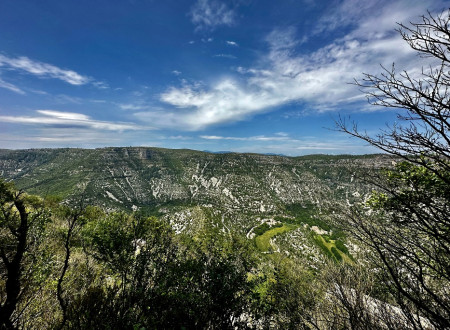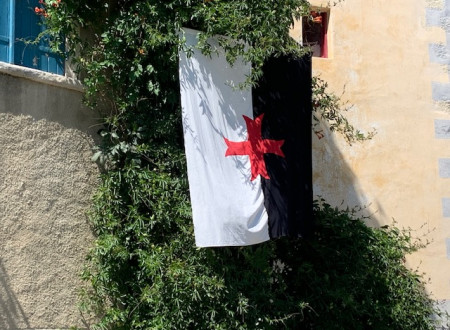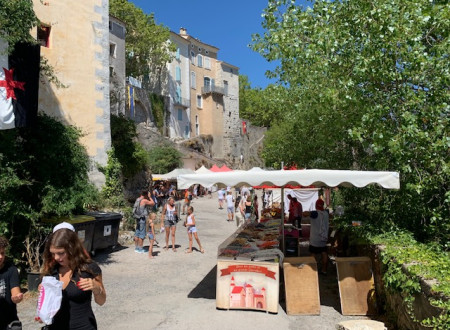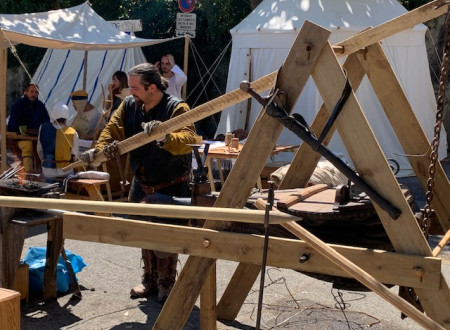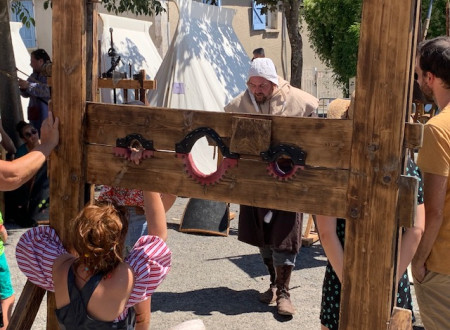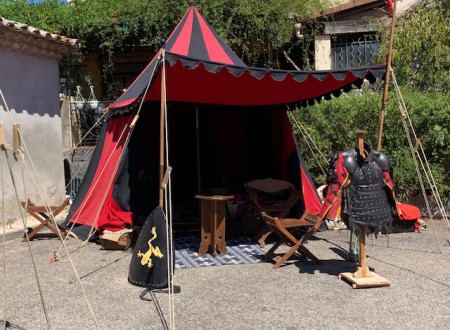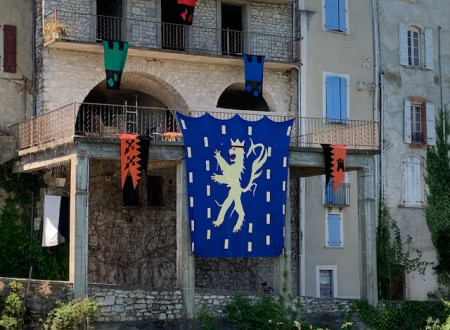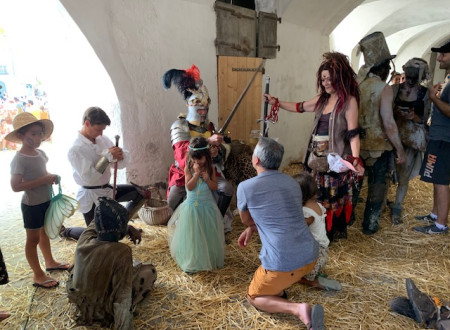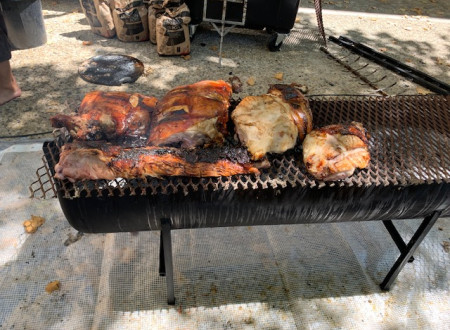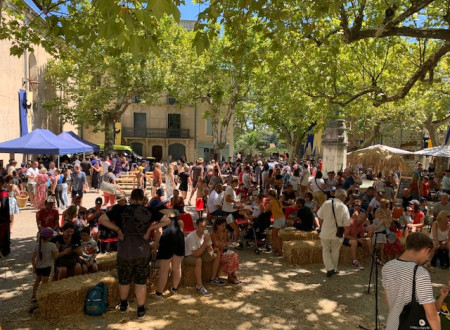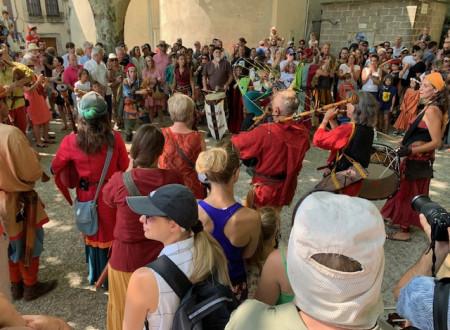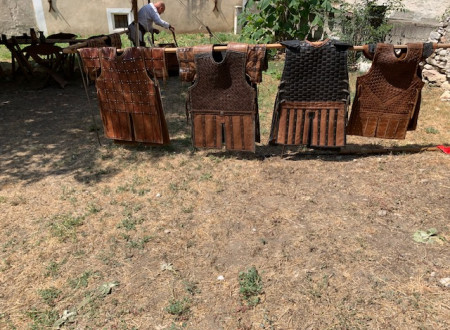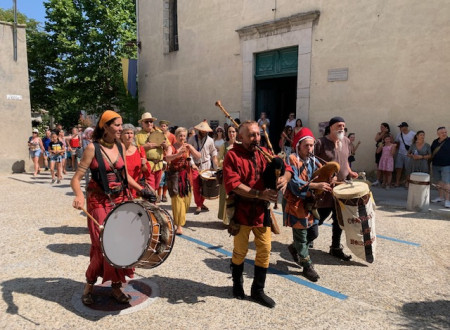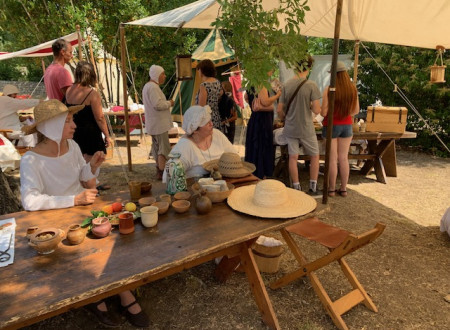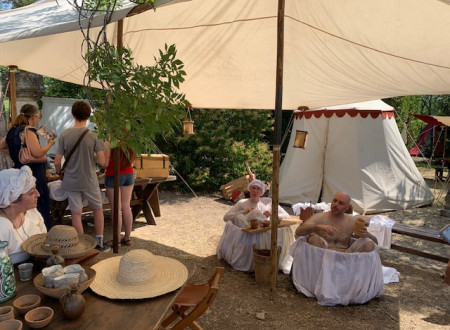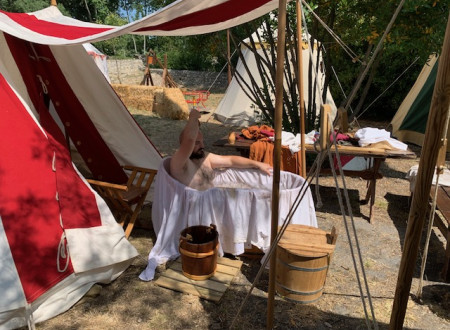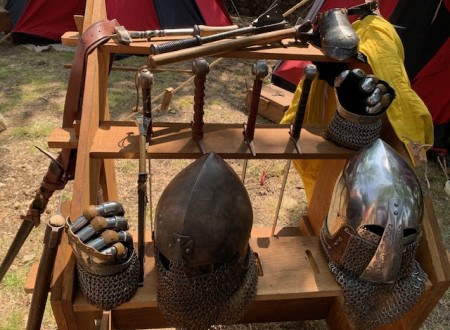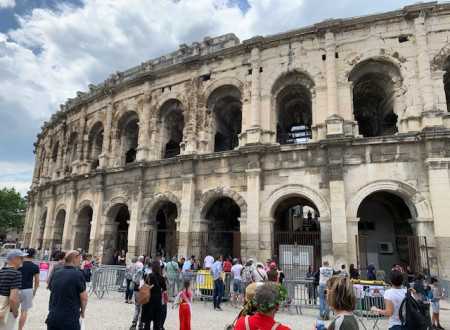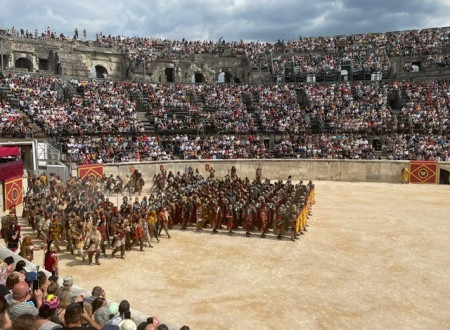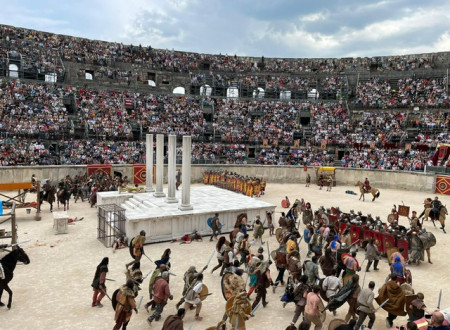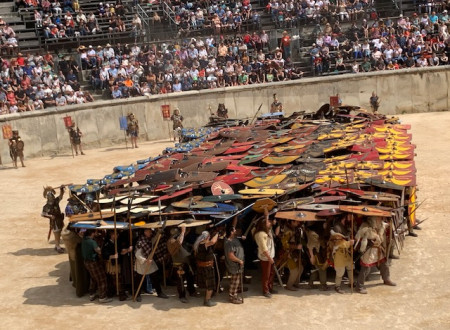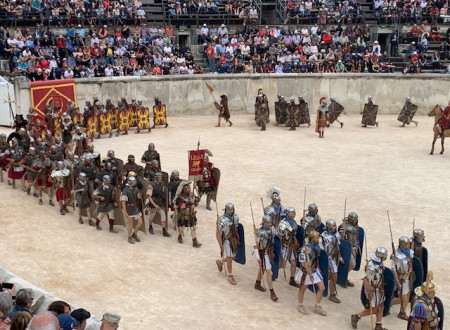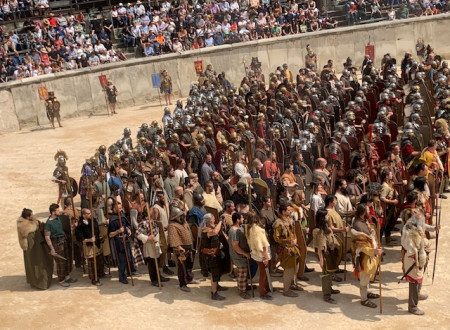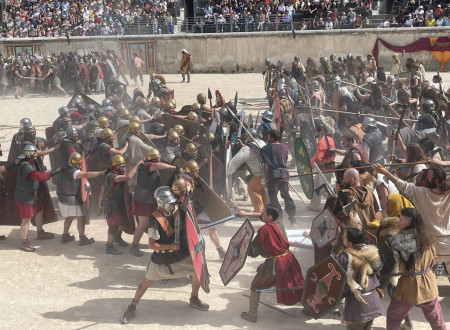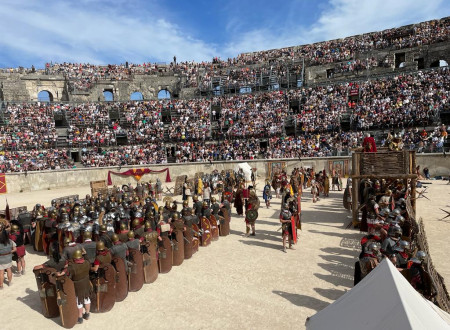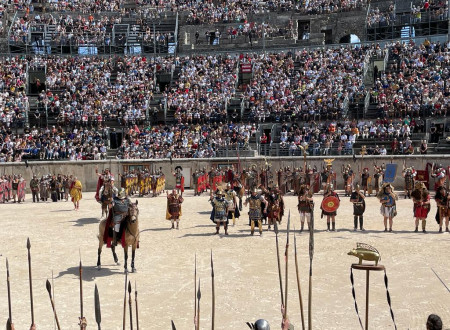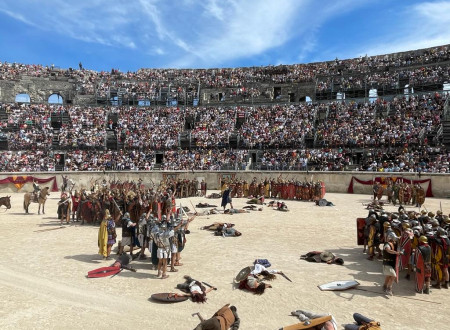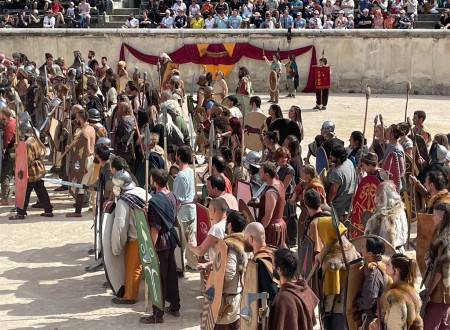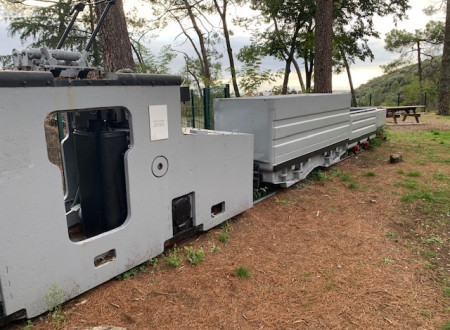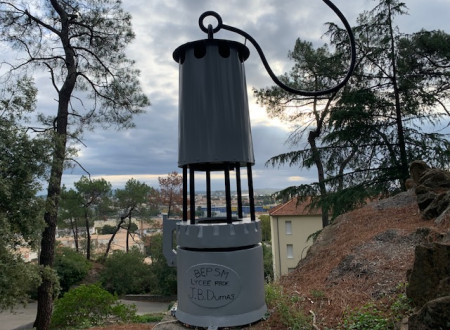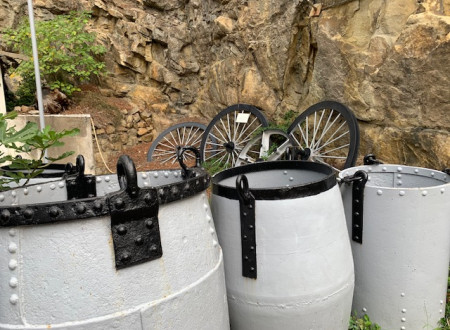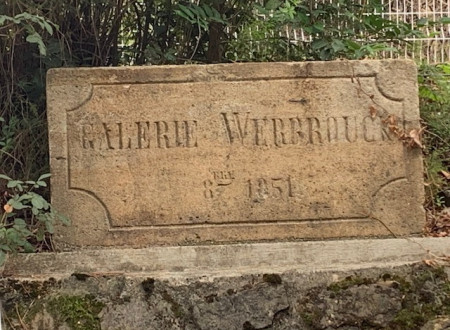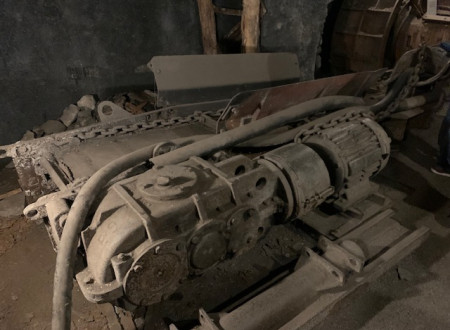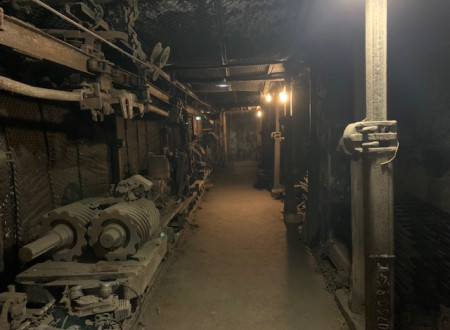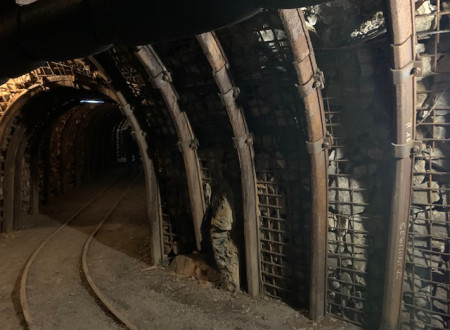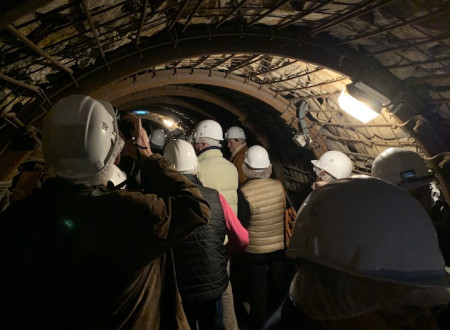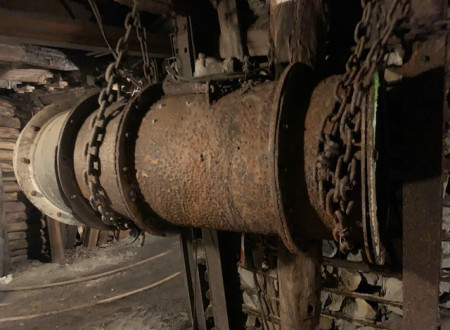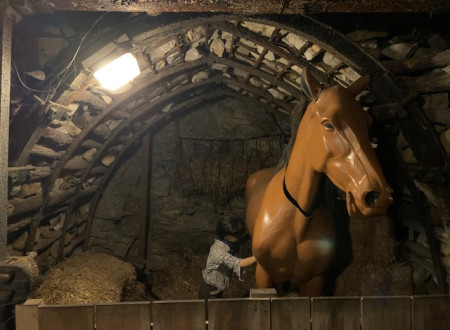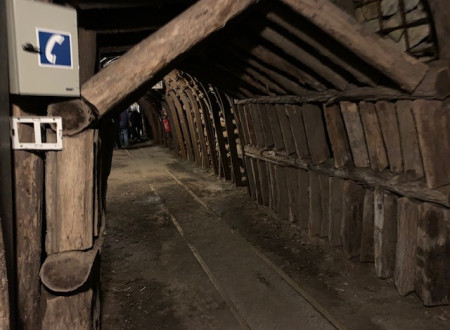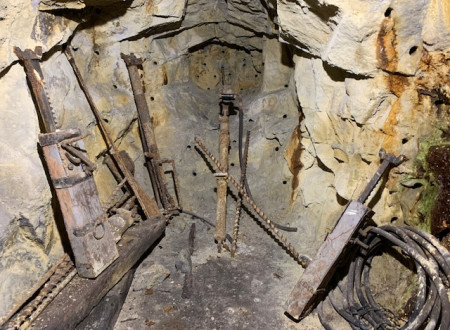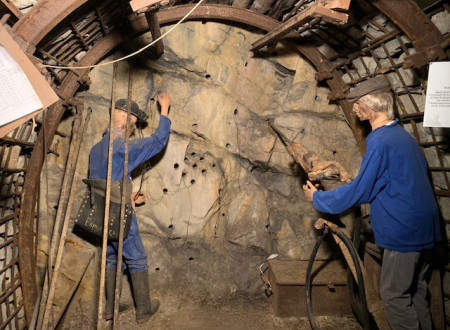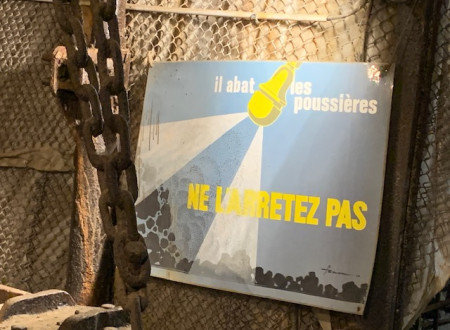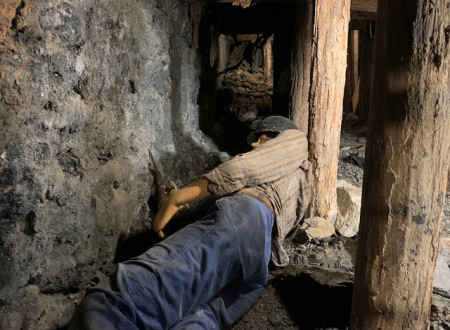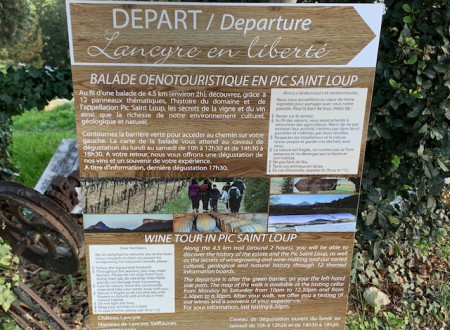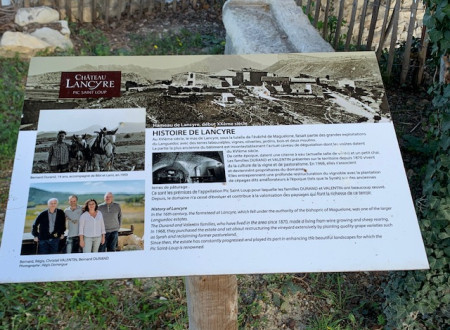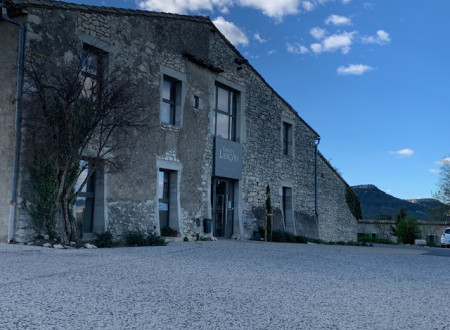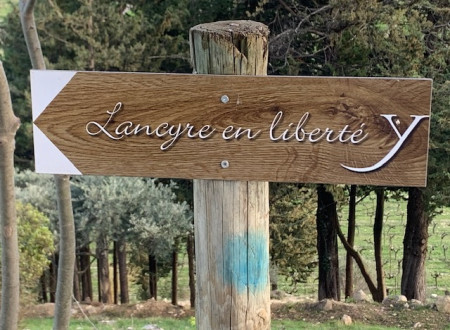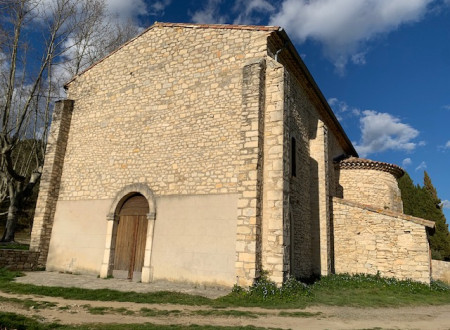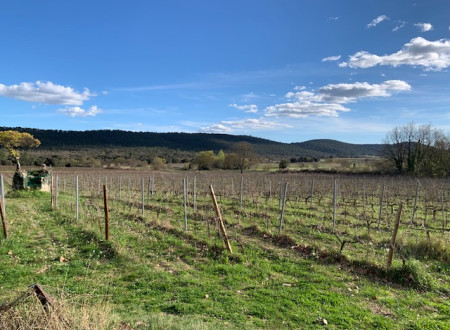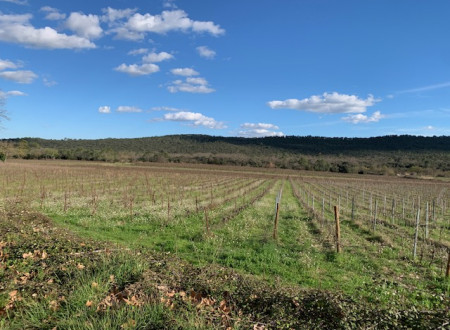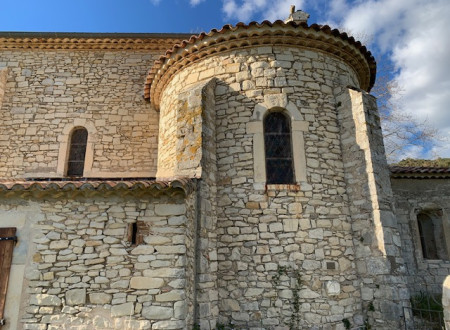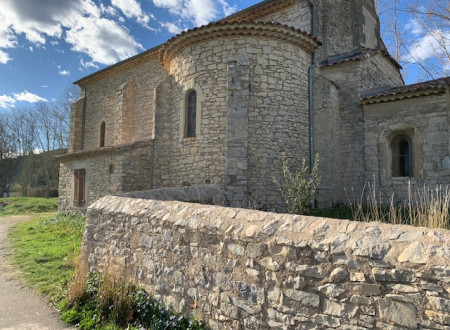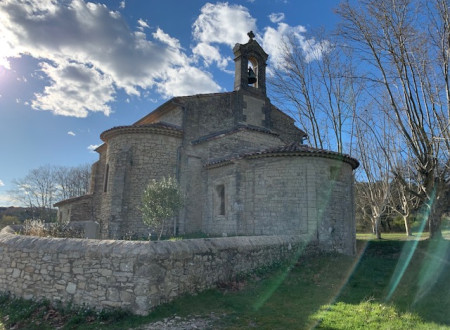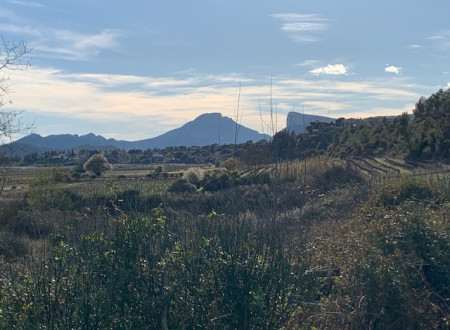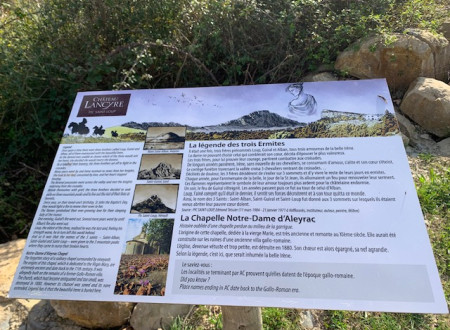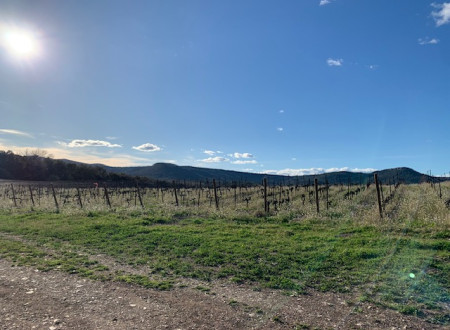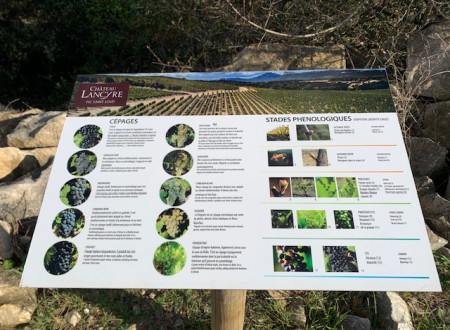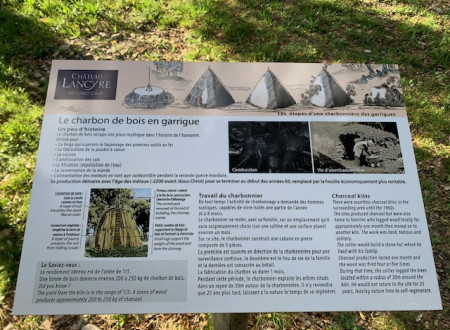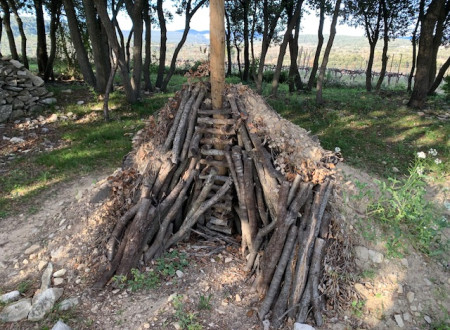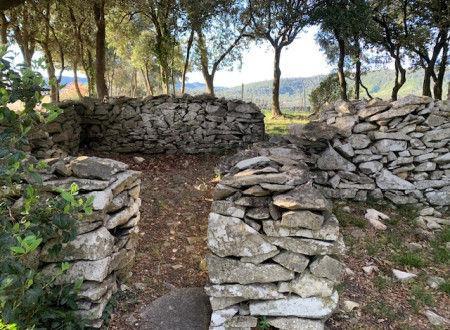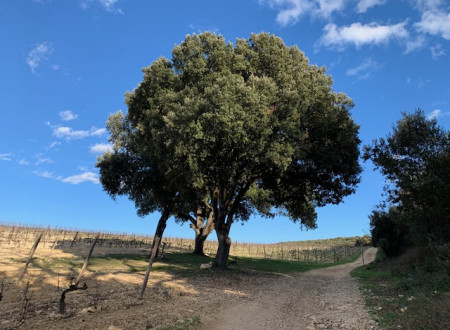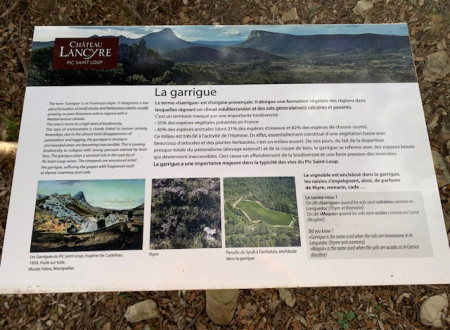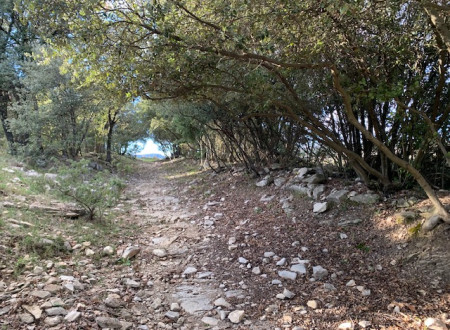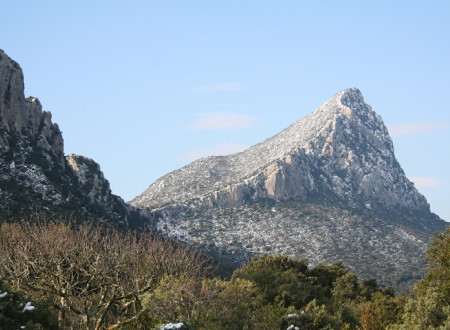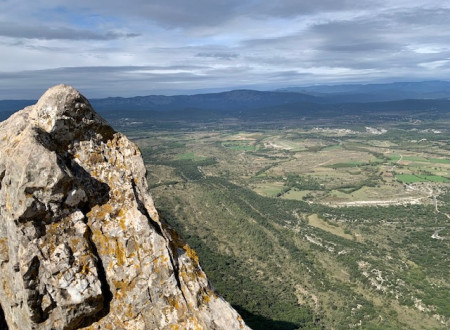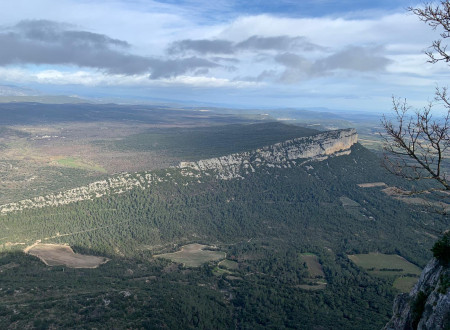A region rich in cultural heritage.
Close to the immense sandy beaches of the Mediterranean, La Grande Motte, Palavas, Le Grau du Roi and the Camargue with its ponds and pink flamingos, but also close to the Cévennes National Park, you will want to discover territories like Avignon, Uzès and its Duchy, the Pont du Gard ", the Roman cities of Nîmes and Arles, the bamboo plantation of Anduze.
Many villages of character are also worth seeing, Lussan: Sauve, Vézenobles, etc ...
How to savor the local products of the soil.
You can enjoy our many local products (olive oil, honey and especially our "pélardons").
For wine lovers: your hosts are true oenophiles, they will be happy to help you discover the many wine estates and wine merchants of the region.
The Tornac Castle.
The Tornac Castle(11 th and 12 th century).
Its square tower dates back to the 11th century but has been in ruins since 1792 (the French Revolution). It is currently being restored once more.
This fortress strategically dominates the right bank of Gardon Anduze: it could protect the road leading to Anduze and the Cevennes.
From here you have a magnificent view of Anduze and the vineyards of Tornac.
Access is free but you need good shoes to reach the castle.
The Haribo bonbon Museum.
Whole families like to visit this museum. It has been dedicated to sweets of all kinds since 1996!
You will discover the story of the family who created it.
The old posters and boxes will show you the evolution of advertising and packaging.
The games will teach children everything about sugar, confectionery and the operation of this factory.
Information on the region.
Every week we give you the information provided by the Tourism Center on local activities and entertainment.
The Bamboo plantation in Anduze.
That fantastic garden carries you right away into a large exotic decor( 12 hectares). Even if the bambooes reign supreme, you can also admire outstanding trees( size, age...) such as sequoias, gingkos bilobas, cryptomerias, tulip trees, magnolias and camellias.
The different forms of laying out take you through different worlds, with the aquatic garden, the bamboo forest, the Japanese garden, the labyrinth, the Chinese palm-tree avenue, the garden with Eugene's pools or else the Mazel Greenhouses.
The Trabuc Cave.
That crystallised cave is animated by moving clear water that flows from "gour" ( deep basin) to cascades, from petrified flows to turquoise underground lake.
One of the largest caves in Cévennes, it was discovered in 1945 and contains the mysterious 100 000 soldiers, a unique concretion that surprisingby seems to guard that stone setting, 100 meters below ground.
The modern use of lights reveals curiosities, ancient geological features and tells of a great human adventure.
1km route has been fitted out and made safe: you can walk alone with the audio-guide( or with a guide in season). It makes you feel closer to the original environement, just like the first explorer.
The Cévennol steam train.
All aboard and close the doors! The train is leaving now!
Whistling, steam gushing, the locomotive starts slowly and disappears into a long tunnel.
Start a 13-kilometer journey through the Cévennes mountains, aboard open cars or in elegant and comfortable cars of yesteryear.
The train winds through the grandiose landscapes of the Gardon Valley. When the train stops at train stations, locomotive engineers and locomotive drivers explain the operation of the steam engine they have renovated.
You can also walk around and discover all kinds of collected objects.
The village of Sauve
Surrounded by wooded hills, vineyards and orchards, Sauve is a small village of Gard located between Quissac and Sommières 35 kilometers from Nîmes and the edge of the Cevennes.
Built at the foot of the Sea of Rocks, a karst chaos with ruiniform turrets, Sauve sits on the banks of Vidourle as its picturesque Old Bridge spans with its stone arches.
Founded in the 11th century, the old village of Sauve is a maze of narrow streets, stairs, vaulted passage and beautiful houses with Gothic facades from the fourteenth to the eighteenth centuries.
A curiosity of the town is the Fontaine de Sauve, a resurgence of the same type as the Fontaine-de-Vaucluse. Gushing out of the rocks, its torrent is particularly impressive in autumn.
Also interesting and unique to Sauve, is its Conservatoire de la Fourche, the only place to still make hawkwood forks.
The bridge of Abarines
The Abarines bridge has spanned the Gardon for more than a century. Legend has it that the stone building, built to open up the valley, was designed by Gustave Eiffel. In 1900, after two years of work, the bridge was inaugurated. Today, during the beautiful season, it is used by thousands of cars that join Saint-Jean-du-Gard or Mialet. Stopover vacationers or relaxing place of the inhabitants, the beach located under the high vault of 30 meters high is very successful.
The Anduze night market
Anduze Night Market
Organized by the Union of Traders of Anduze, the Night Market is the meeting place of the summer holidays in Anduze.
Every Tuesday evening, the whole city is invested with stands of artists, artisans and local producers.
From 19h00 until 23h00 approximately
CONCERTS from 19h30
Aigues-Mortes
The ramparts of Aigues-Mortes are a masonry wall protecting the city center of Aigues-Mortes, Gard, France. Built between 1272 and 1300 near the tower of Constance, the ramparts are spread over a length of 1,600 meters. They are especially the wish of Louis IX.
Les Saintes-Maries-de-la-mer
The Saintes Maries de la Mer are located at the edge of the Mediterranean, in the heart of the Camargue Natural Park. Surrounded by vast plains of beautiful and wild ponds, the city offers many activities against the backdrop of a protected environment that has remained authentic.
The Saintes Maries are famous for the tradition they have kept, land of welcome for gypsies, high place of pilgrimage, all this rich folklore in color, music and spirituality attracts many visitors throughout the year.
Saint-Guihem-le-Désert
Step on the way to Compostela, Saint-Guilhem-le-Désert and its church, jewel of the Languedoc's Romanesque art, occupy a wild site at the entrance of the Verdus gorges and the circus of the Infernet. From the Place de la Liberté and its imposing 150-year-old plane tree, the village spreads its narrow streets, still admiring Renaissance mullioned windows, twin bays and gothic lintels. The Devil's Bridge or Bridge called "Pont de Saint Guilhem" is part of the legend surrounding Guilhem; it is on the road that leads to Saint-Guilhem-le-Désert. We practice all year hiking, caving, and especially canoeing upstream village Ganges road, 2 km before arriving at the village of Saint-Guilhem, from May to September.
The chapel of Pise
This Romanesque chapel was built between 1992 and 1998 on the site of a ruined sheepfold on the occasion of the 400th anniversary of L'Édit de Nantes, near Quissac about 6km from Mas le Crieulon.
La Couvertoirade
La Couvertoirade was from the outset a center of agricultural exploitation for the Templars. On these lands, they make peasants cultivate cereals, raise horses (for war) and sheep (for meat, skins, milk). A village develops around the castle, still visible today. In 1312, the Temple Order was dissolved. All of their property goes to the Hospitallers who become the new masters of La Couvertoirade. The town had 135 lights in 1328, or about 800 people. In the middle of the 14th century, the "Routiers" (companies of mercenaries living in more or less organized and often poorly disciplined bands) plundered the Larzac. For fear of these armed bands, the inhabitants ended up fortifying the town from 1439 to 1445. It was Déodat d'Alaus, master mason of Saint-Beauzély, who was responsible for carrying out this work. Unfortunately, this territory will already have been greatly depopulated.
Le Mont Aigoual
The Mont Aigoual Meteo France Observatory is located at an altitude of 1567 meters. It is the highest point of the Gard department and dominates the southern slope of the Cévennes arc. Meteorologists introduce you to weather science and how to observe the weather. Discover Aigoual throughout the seasons, its unique history and its exceptional climatology.The Aigoual massif is renowned for its hikes and has more than 28 trails to discover and to suit everyone's tastes.
Clamouse cave
The Clamouse cave is located in Saint-Jean-de-Fos in the Hérault department, at the foot of the Séranne. The cave opens a few hundred meters upstream from the Pont du Diable, near the medieval village of Saint-Guilhem-le-Désert, on the right bank of the Hérault gorges, open all year round, 7 days a week All visits are guided and last approximately 1 hour 30 minutes for a 900 meter course.
The cellars of Roquefort Societe
The Roquefort cellars are where Roquefort cheese matures. They are characterized by their age and the micro-climate conducive to the development of the microbiota and molds which contribute to the identity of this raw milk cheese. Enter the legend of ROQUEFORT SOCIETE! For 1 hour, accompanied by a hostess, unravel the mystery of its natural cellars and the secrets of its Master Refiners. In a grandiose setting, imbued with solemnity, discover successively his digital animation "At the origins of the Roquefort SOCIETE® cellars...", his film, the lighting of the Reynès cellar and the passage through the different levels of natural cellars, without forgetting the tasting.
The Cirque de Navacelles
The Cirque de Navacelles is a natural cirque in the Occitanie region in the South of France in the southern part of the Grands Causses. It is formed by a meander intersected by the Vis river in impressive gorges between the Causse du Larzac to the south and the Causse de Blandas to the north.
Les Médiévales de Sauve
Come and immerse yourself in medieval times during an unforgettable day! An entire old village, with its cobbled streets preserving the charm of ancient times, will be lively and beautifully decorated.
You will have the opportunity to participate in a multitude of captivating activities such as ax throwing, combat simulation, cavalier jousts, medieval songs, skits, storytelling and even falconry.
Craftsmen experienced in the work of stone, iron, leather and paint, as well as specialized cooks, will demonstrate their ancestral know-how to you.
Medieval companies will set up their camps for this day to fully immerse you in another era.
The Roman games
The Great Roman Games have become an unmissable festive and family event in Nîmes. The event has established itself as the largest historical re-enactment on Antiquity in Europe. After a postponement in 2020 following the health crisis, the new edition of the Great Roman Games will be dedicated to the most emblematic character in the history of Rome: Julius Caesar. On Friday October 8, Saturday October 9 and Sunday October 10, the heart of the city -amphitheatre, squares, Jardins de la Fontaine...- plunges back 2000 years to live on Roman time.
The historical reconstruction of the Great Roman Games refers to the proven visit of Emperor Hadrian to Nîmes in 122 AD. On this occasion, he offers sumptuous ludi (games) to the inhabitants: gladiator fights, chariot races and proposes to reconstitute events of the past thus celebrating the most beautiful victories of Rome over its enemies.
The Alès witness mine.
The Alès witness mine is a mining site located in Alès, in the Gard department and the Occitanie region. Open to the public since 1985, it now presents a retrospective of the coal mining activity of the Alès mining basin. The scenography of the site was completely redesigned in 2010.
A unique mining engineering structure in France, the Alès witness mine was created immediately after the war. In 1945-46, the state initiated a process of nationalization of French coal mines. The objective here was neither more nor less than the recovery and economic consolidation of the country, which had been very badly shaken by six years of world conflict. From 1946, the Cévennes miners invested themselves without counting in the national production effort which was to contribute to relaunch France. More than 22,000 people worked then, and thus contributed to the extraction of some 2.4 million tons of coal.
The Castle of Lancyre
"Come discover and share the life of a wine estate 20 minutes from Mas le Crieulon, Château Lancyre, in the heart of the prestigious AOC Pic Saint Loup appellation. Family estate, in Organic Agriculture, of 80 hectares, the vineyard which is located at an average altitude of 150 meters is spread over different plots on hillsides, on a predominantly limestone terroir. A true crossroads between the Mediterranean and the Cévennes, this terroir benefits from two marked influences: a hot and humid climate coming from the sea opposed to an air dry and cold from the mountains. Nestled in the heart of the scrubland, here the Syrah, Grenache, Mourvèdre, Cinsault and Carignan grape varieties flourish for the reds and rosés, Roussanne, Marsanne and Viognier for the whites."
Le Pic Saint-Loup
For lovers of hiking and 40 minutes from the Mas, an extraordinary panorama not to be missed, Pic Saint-Loup is a mountain in the Occitanie region located on the border of the communes of Valflaunès and Cazevieille, in the Hérault department.
Altitude: 658 m, prominence: 428 m.
Visible from a large part of the Hérault department, is accessible on foot about 1 hour's walk for those who like hiking.
